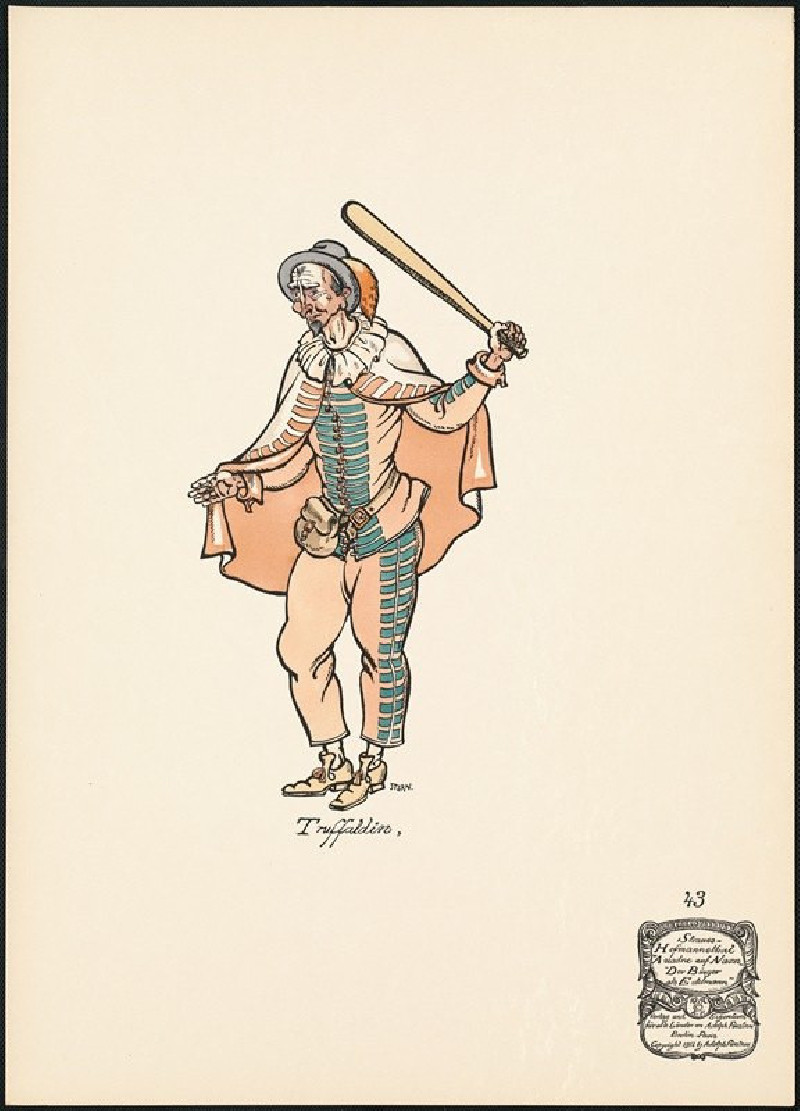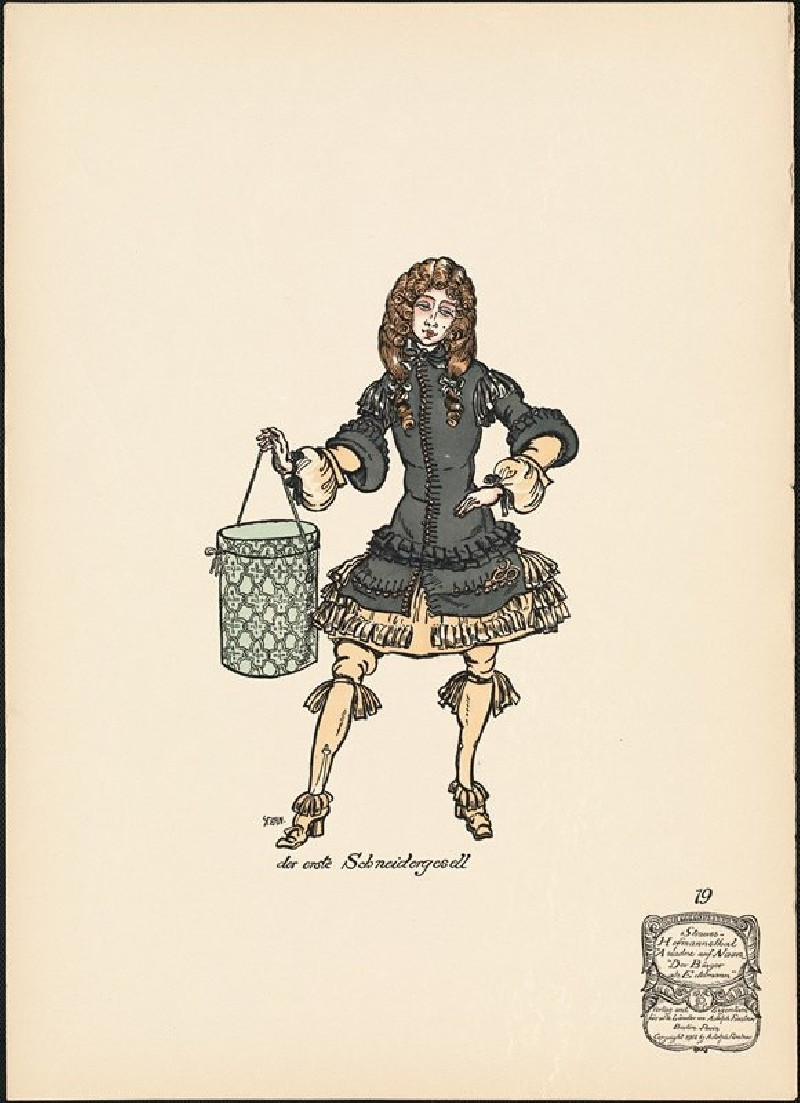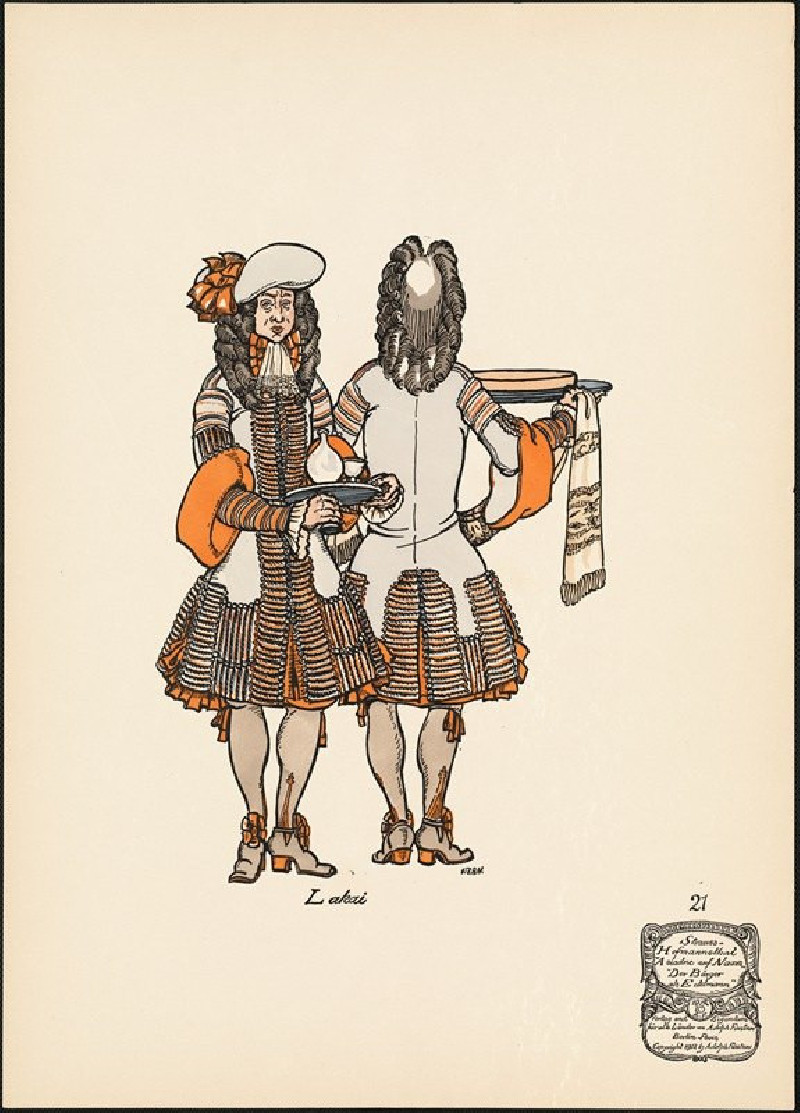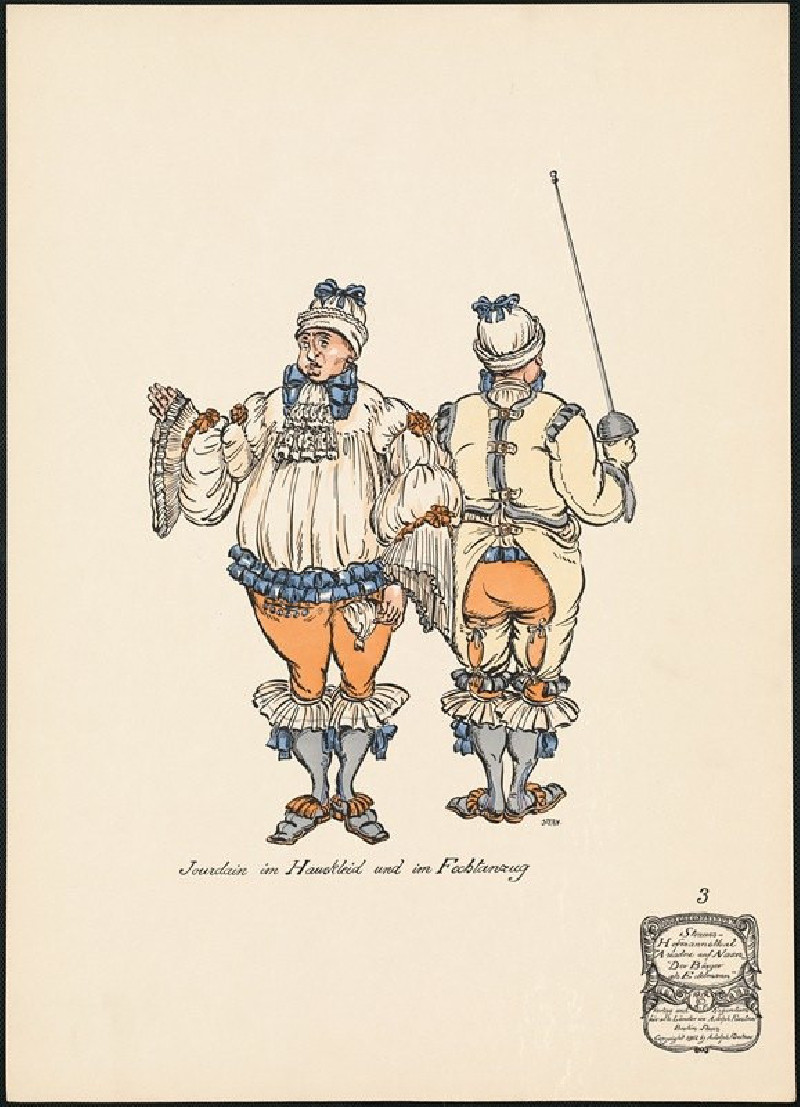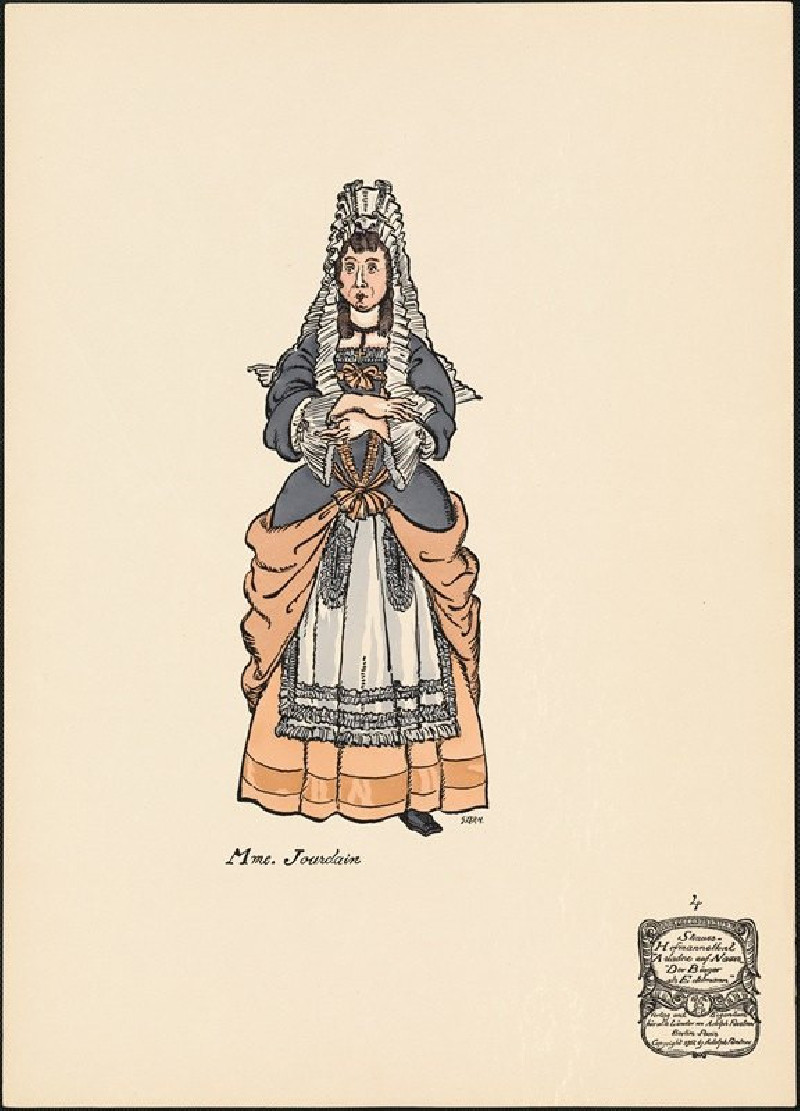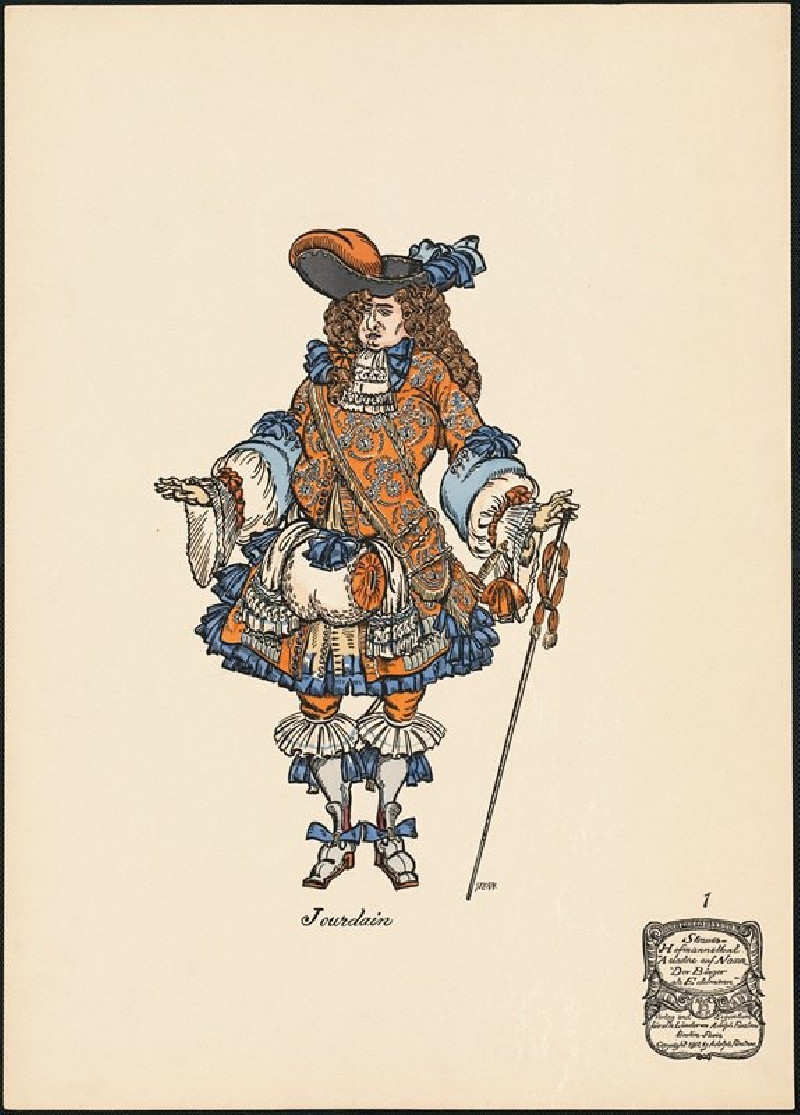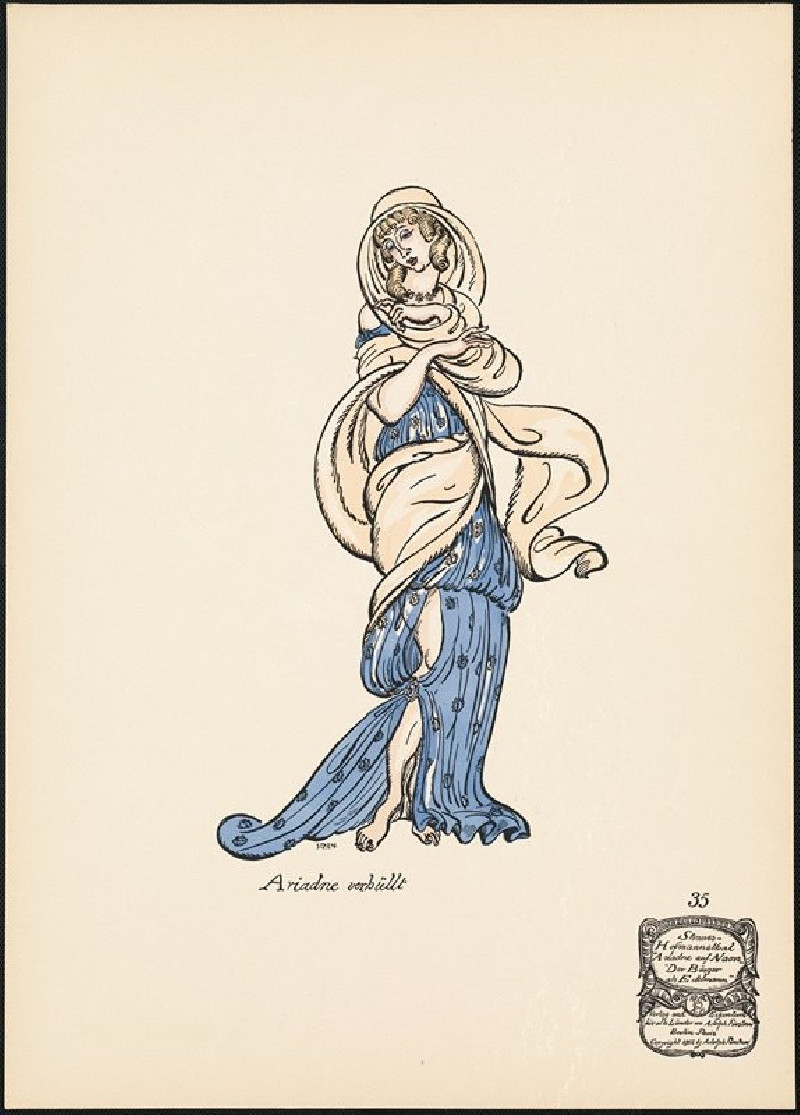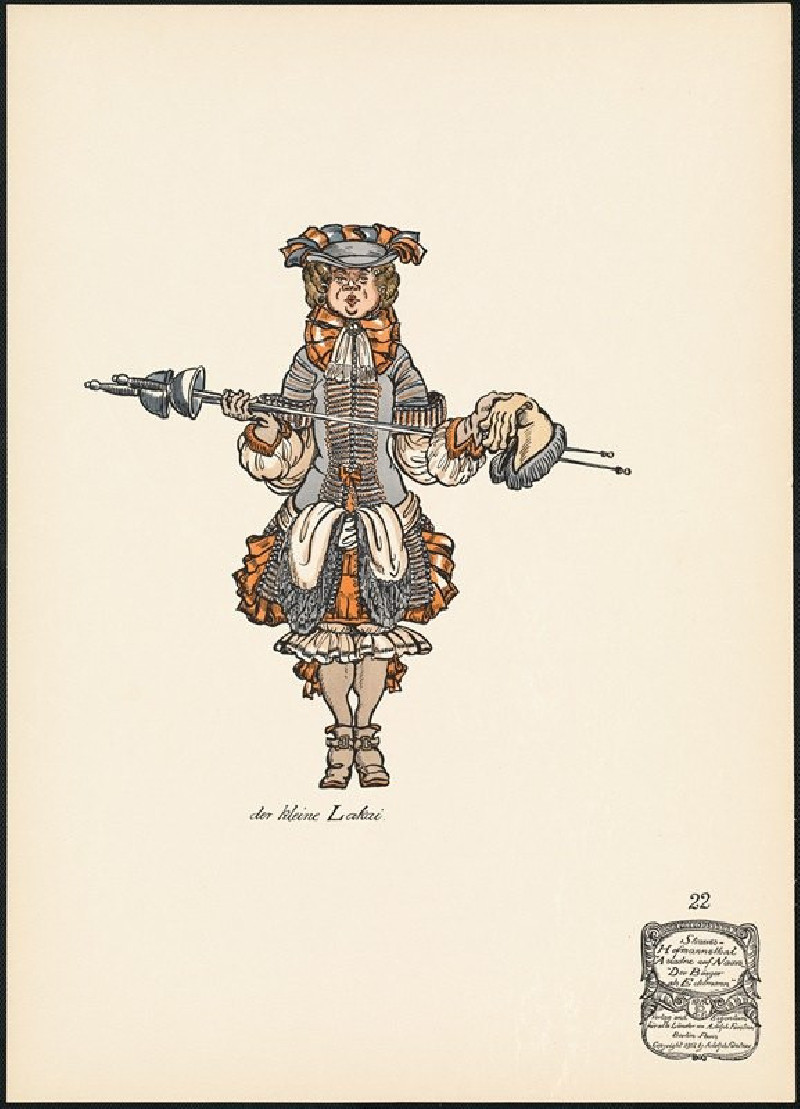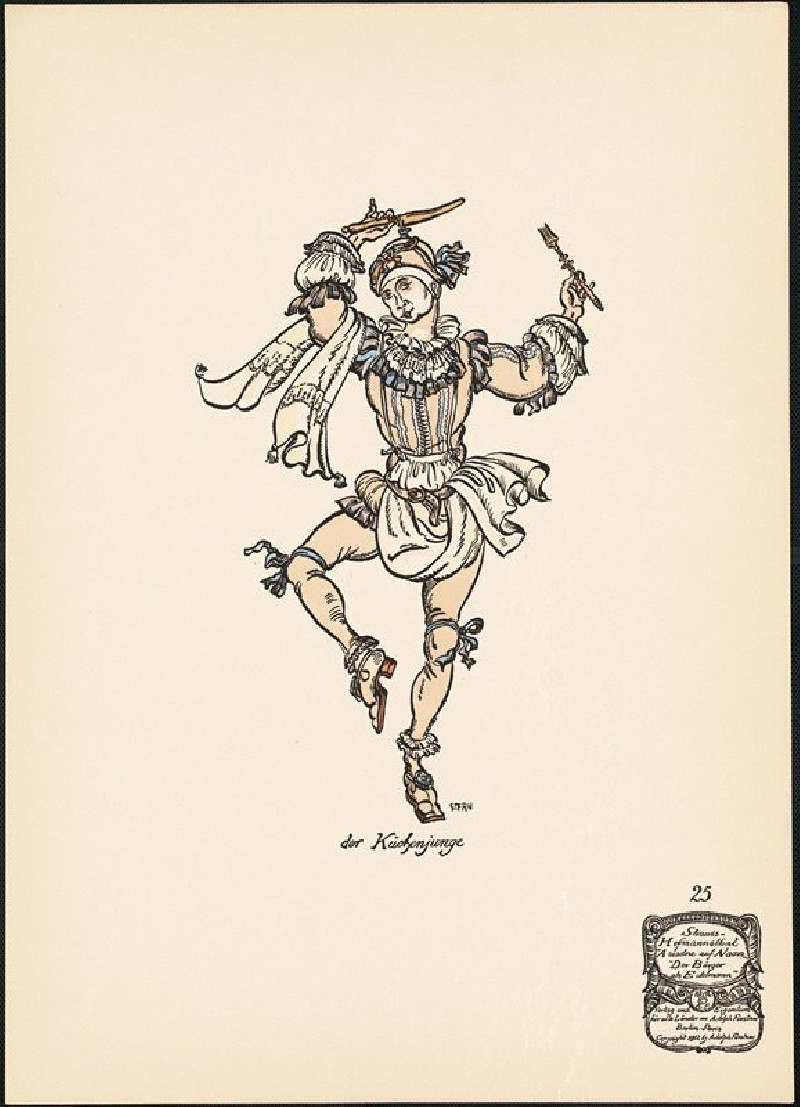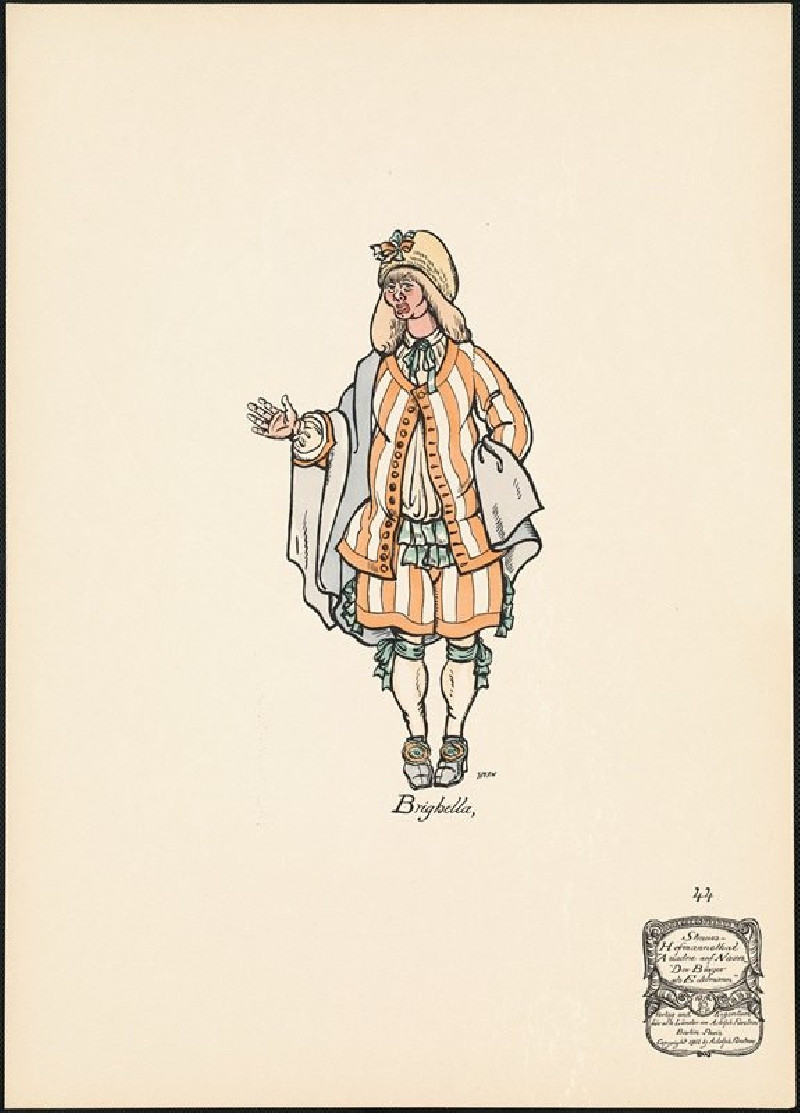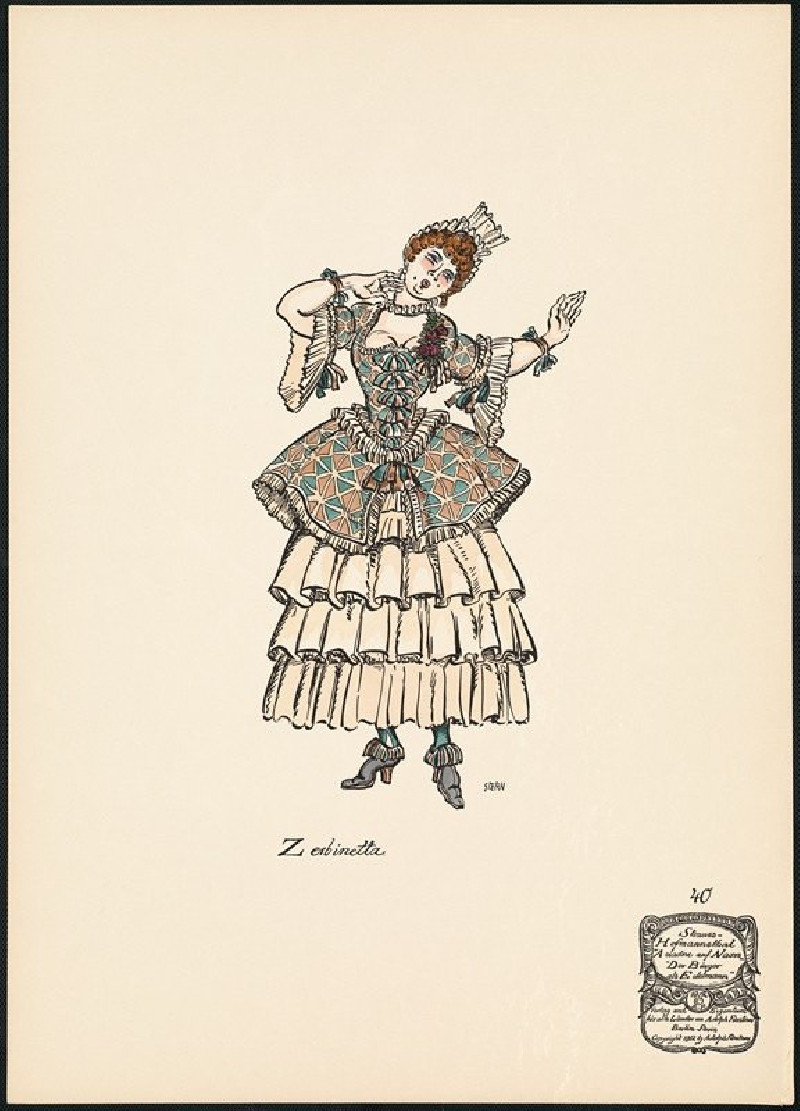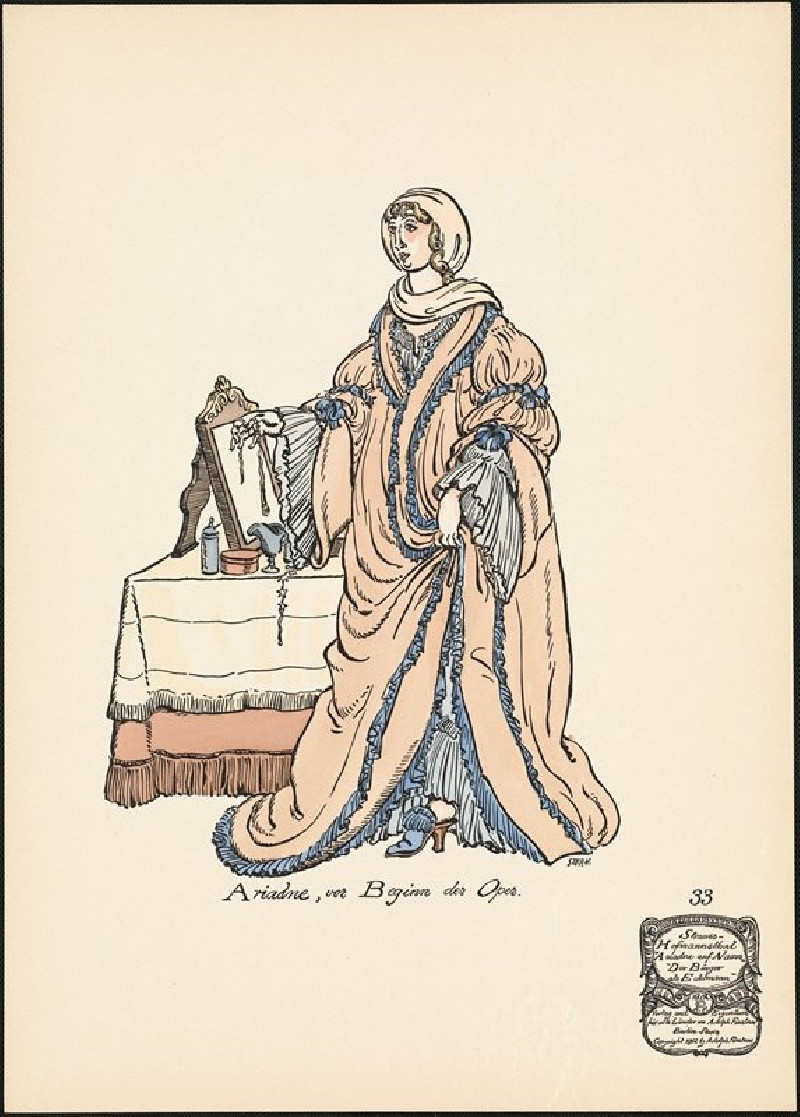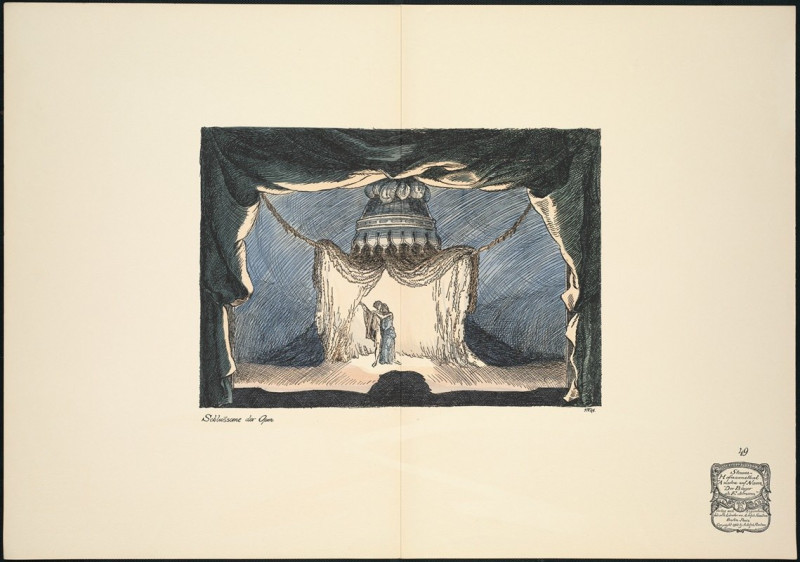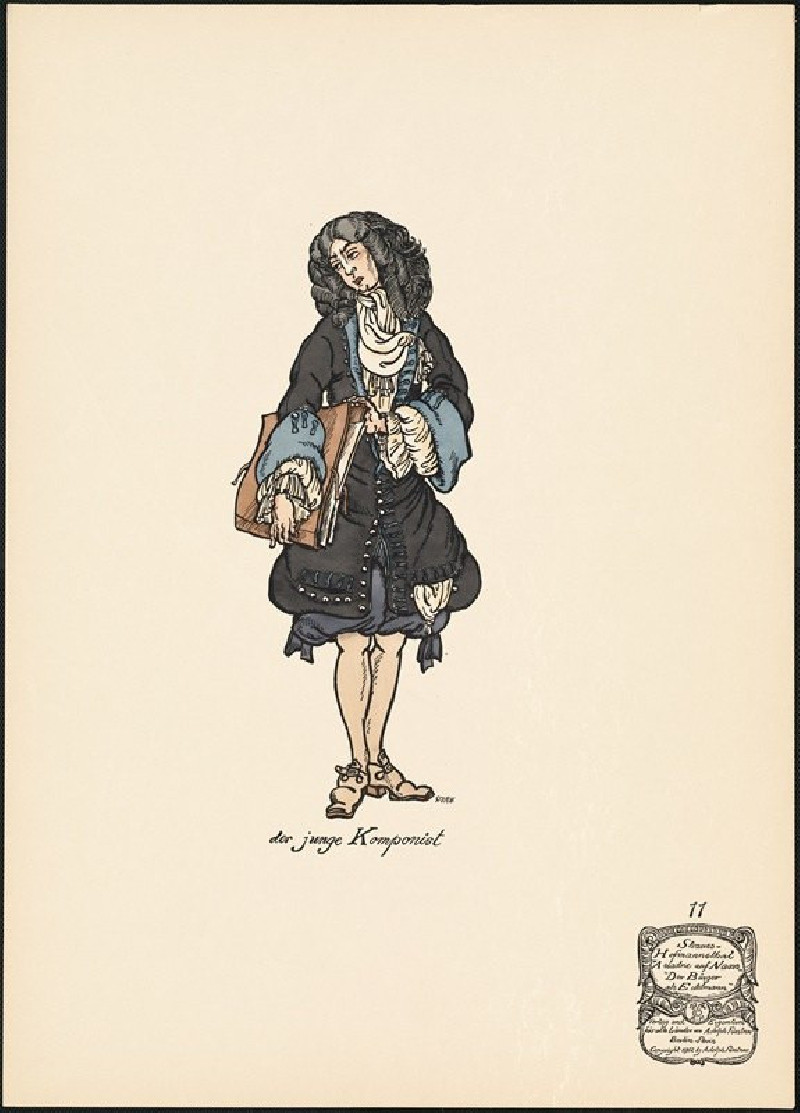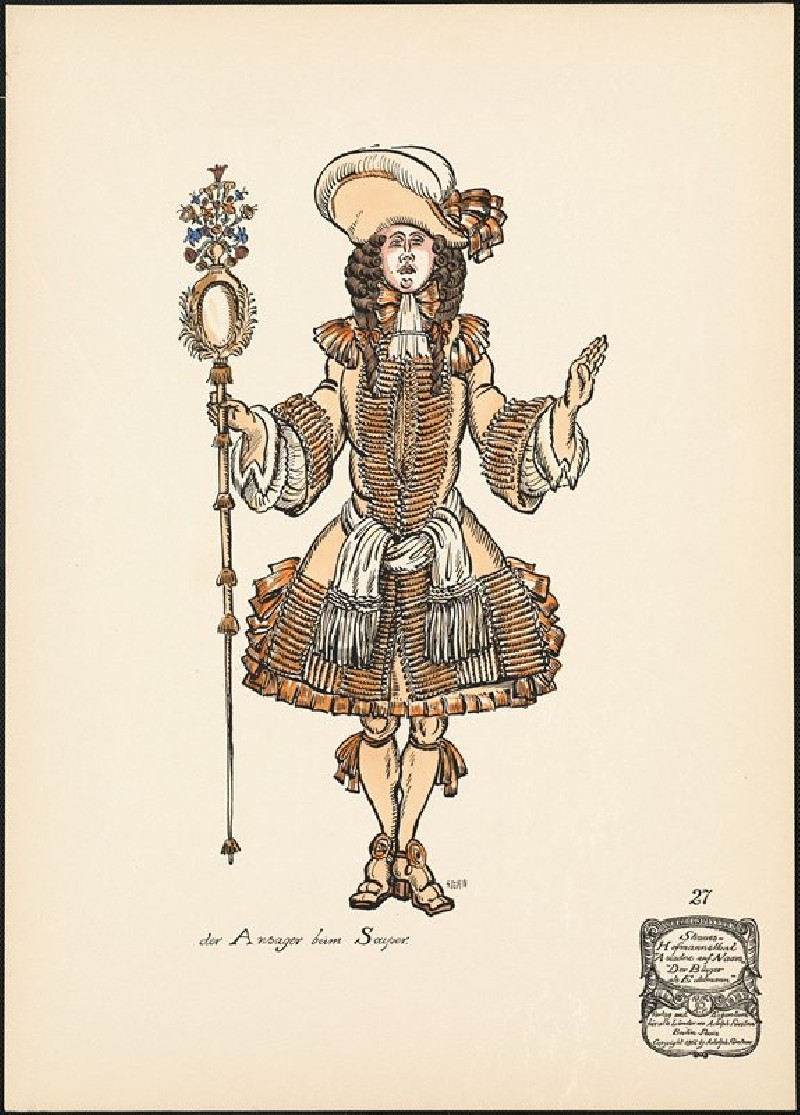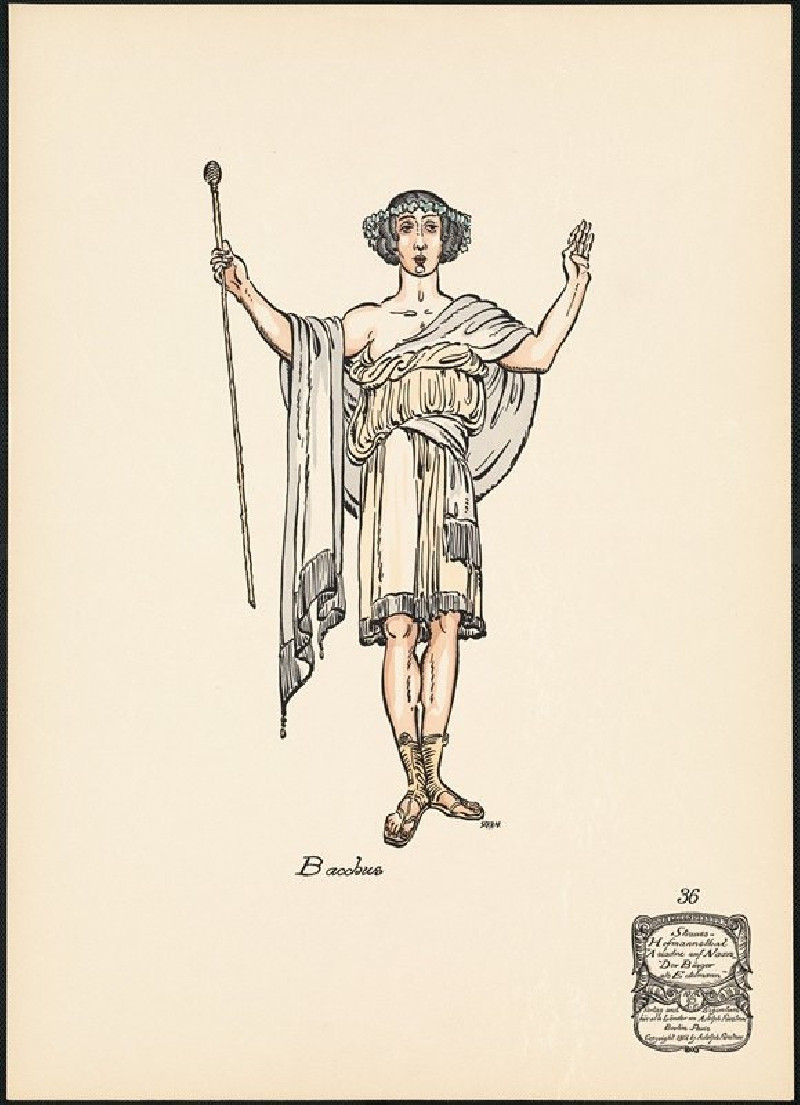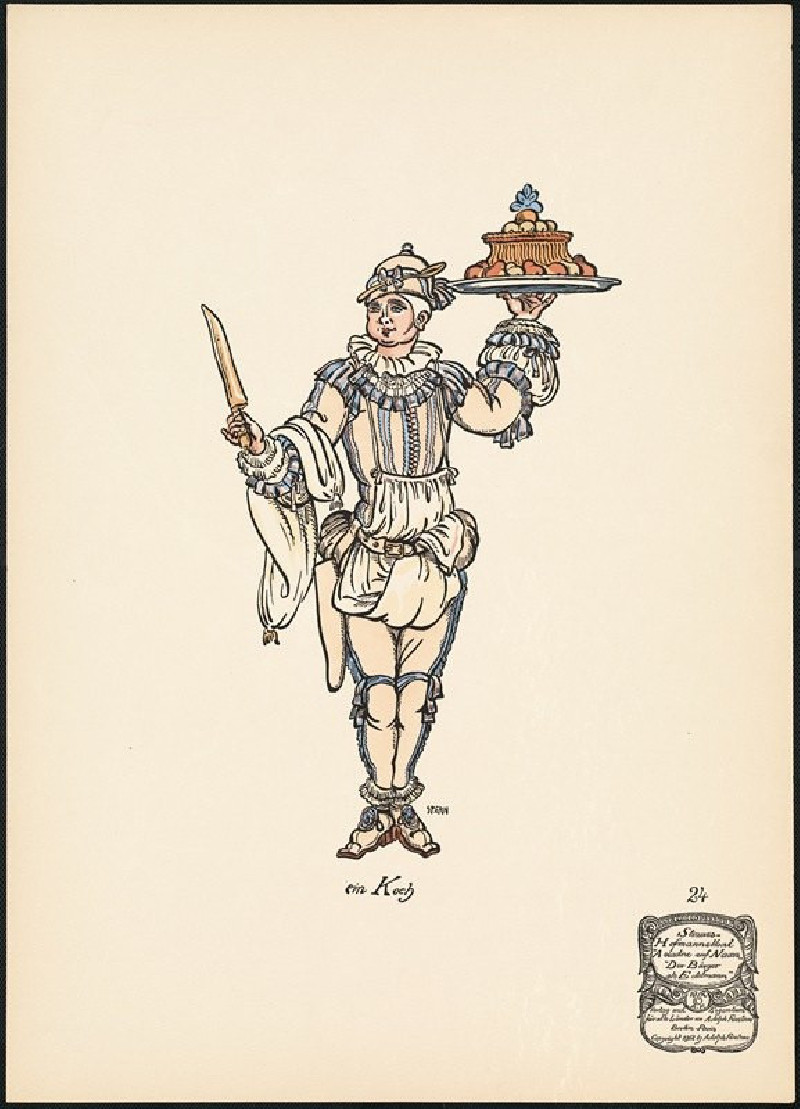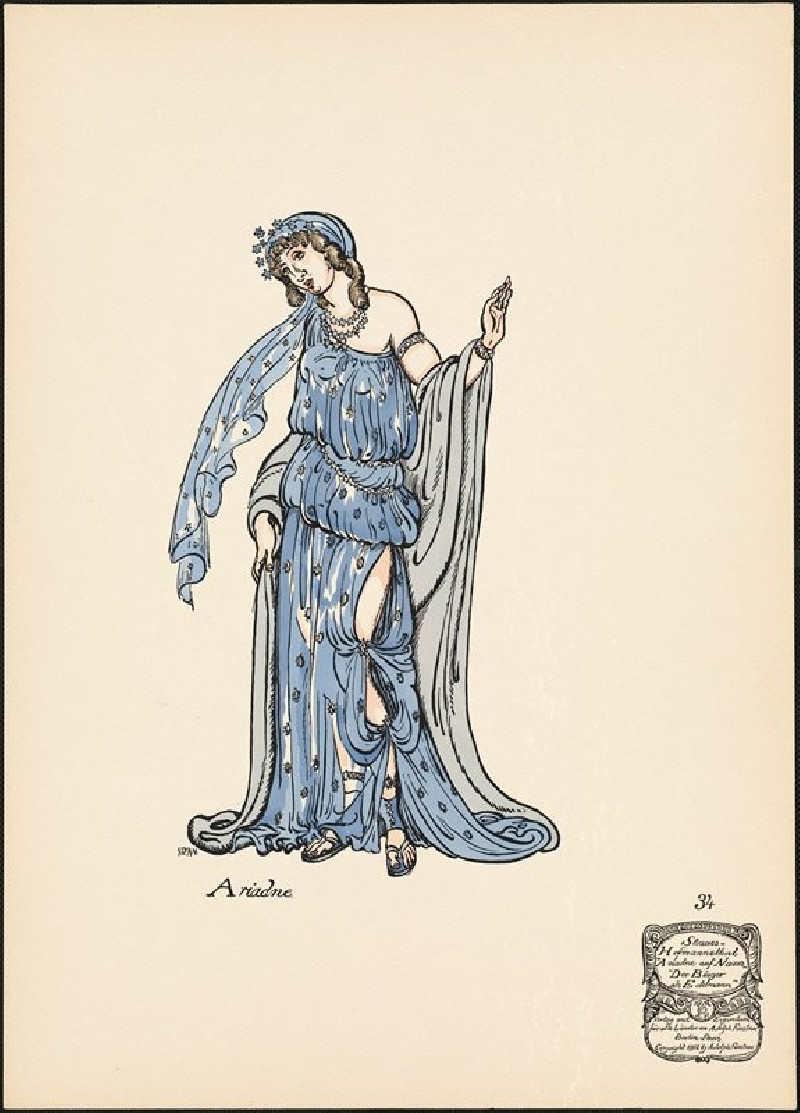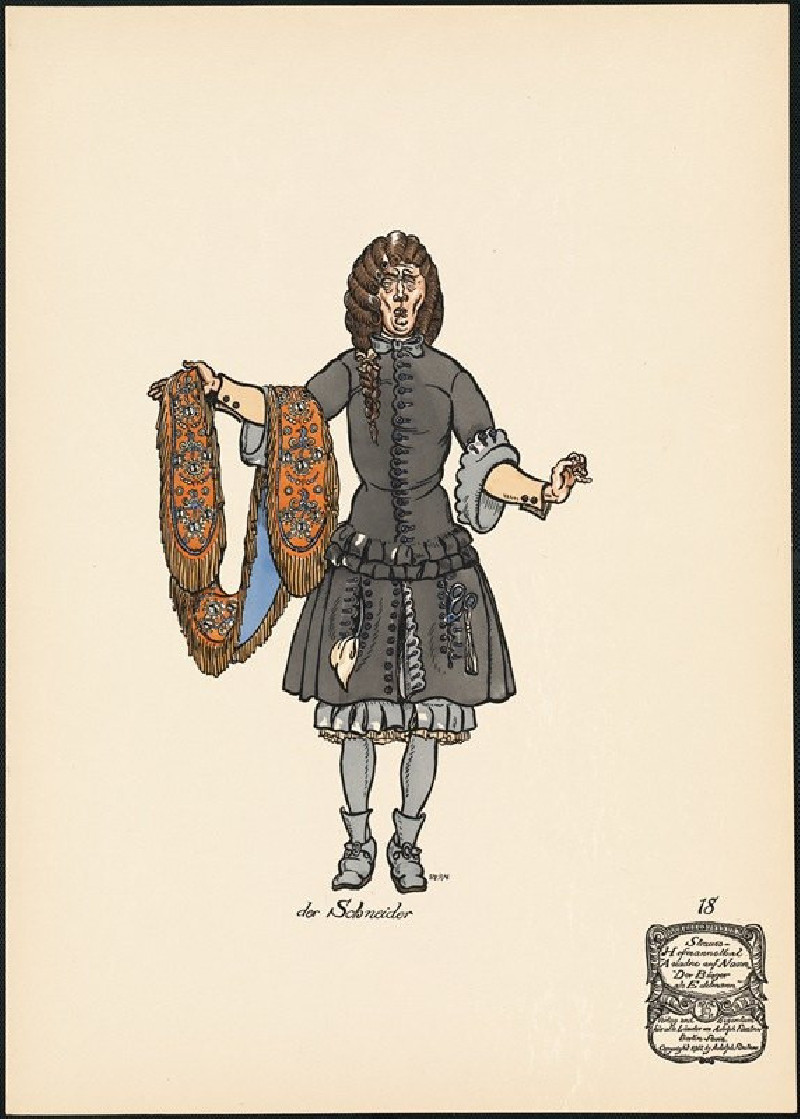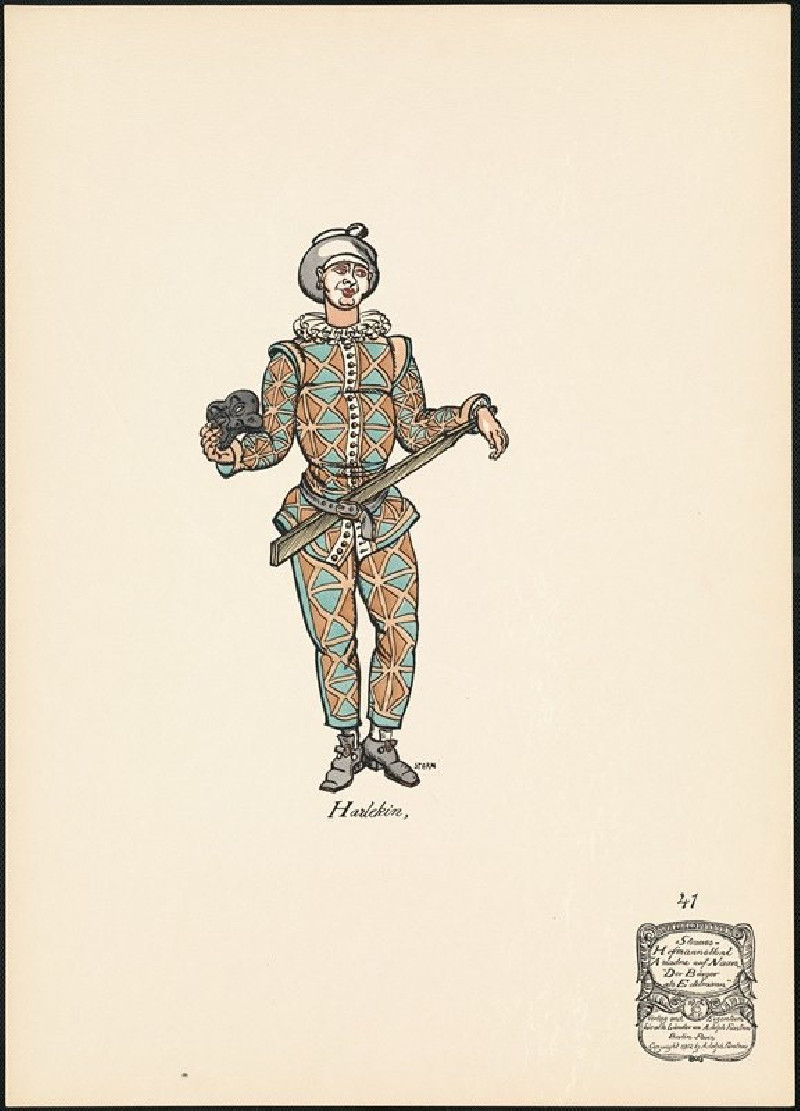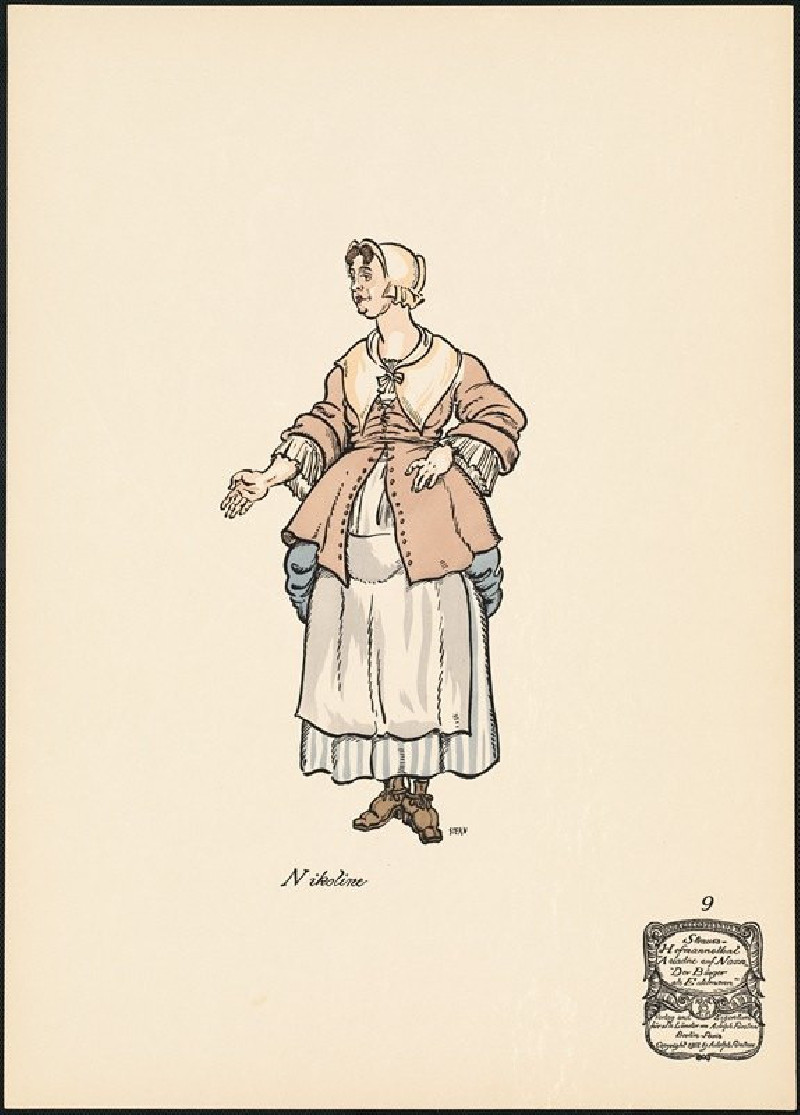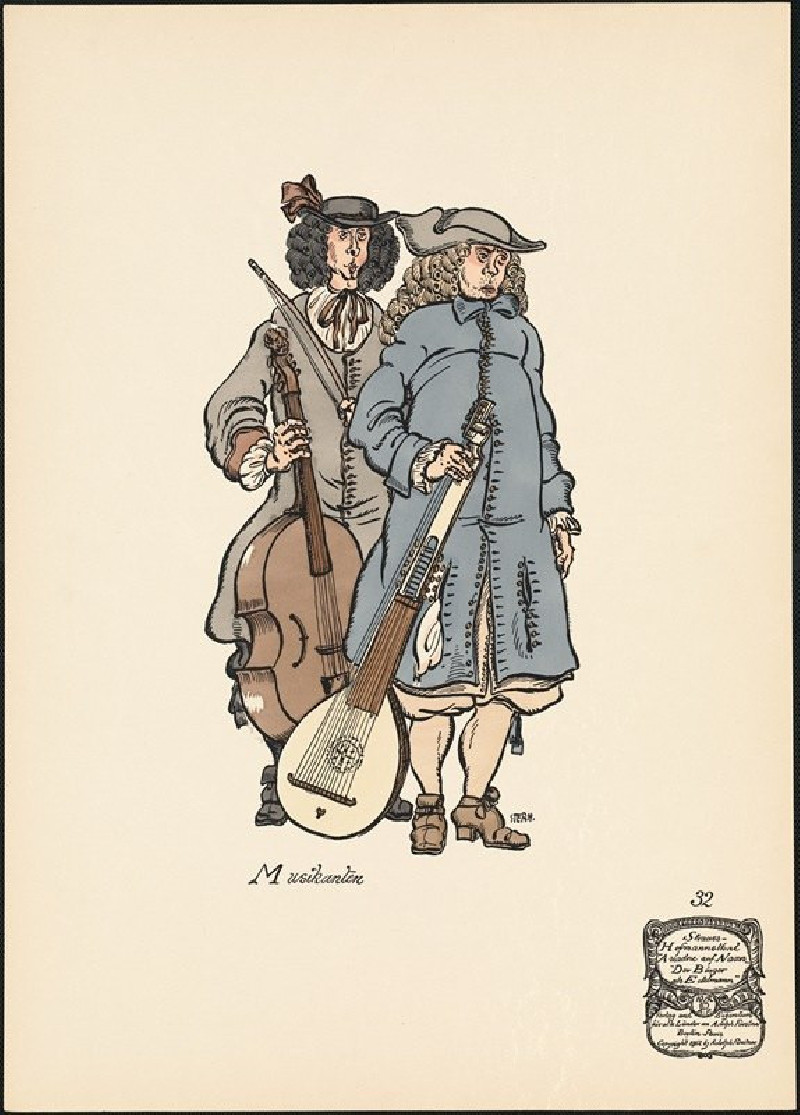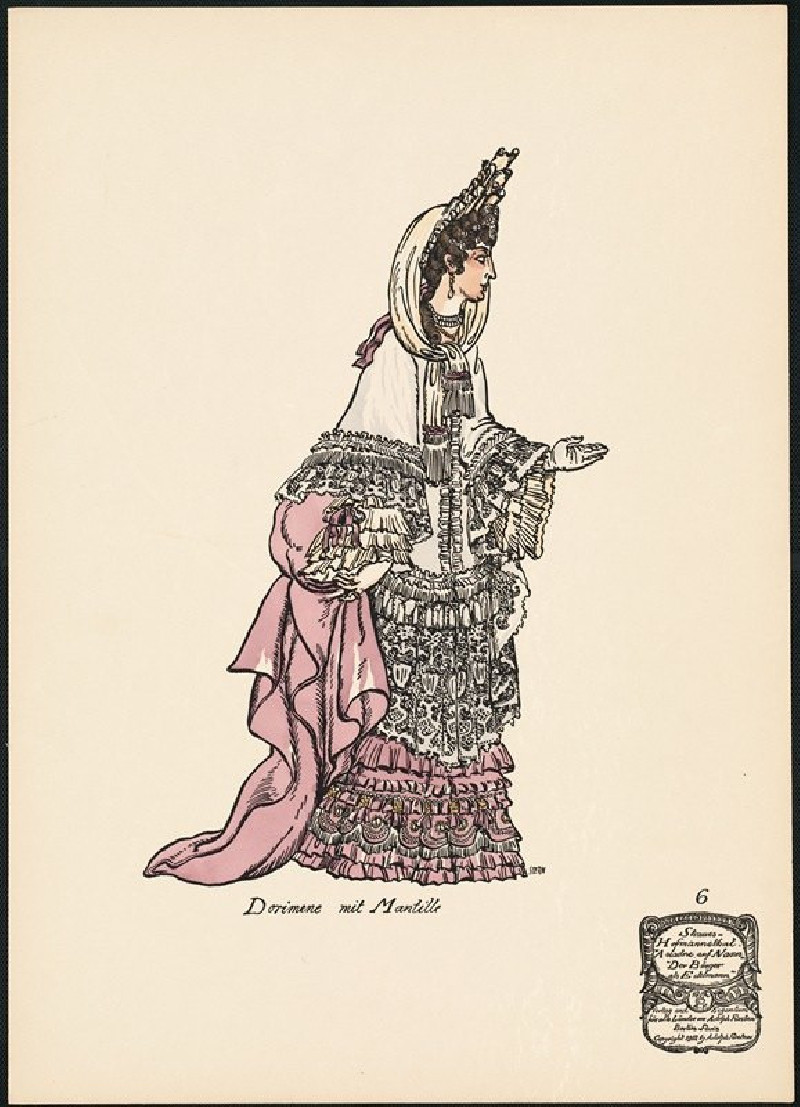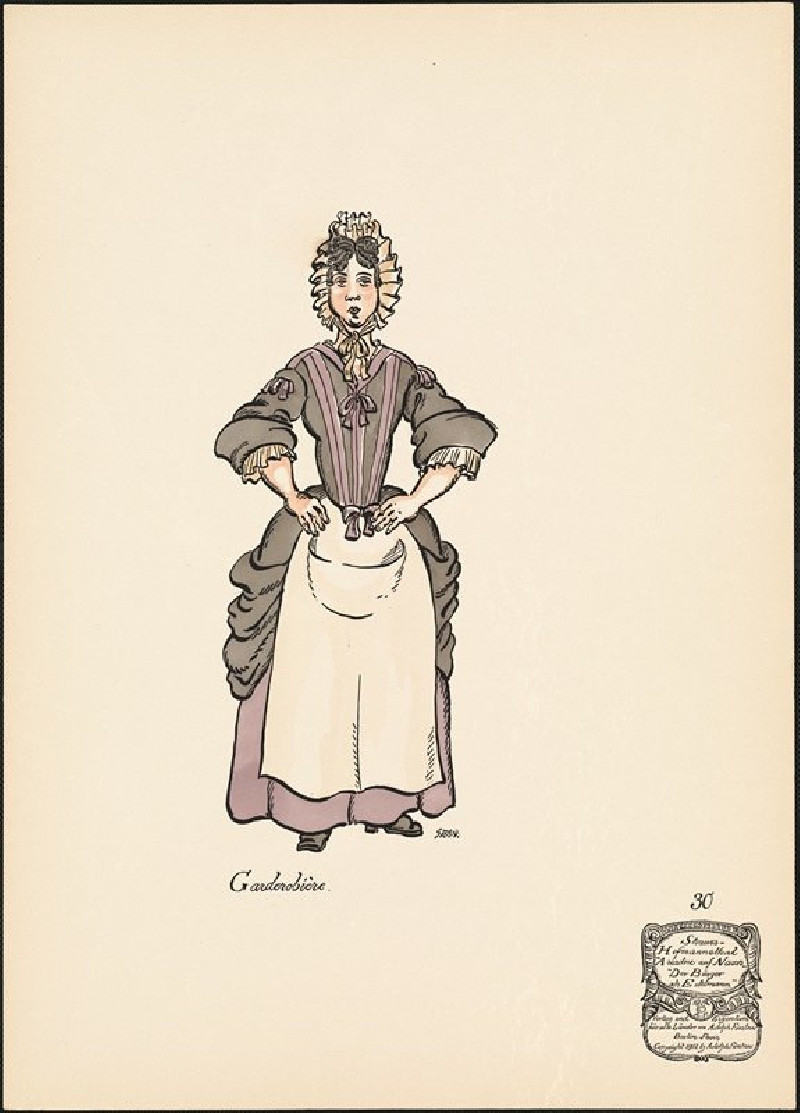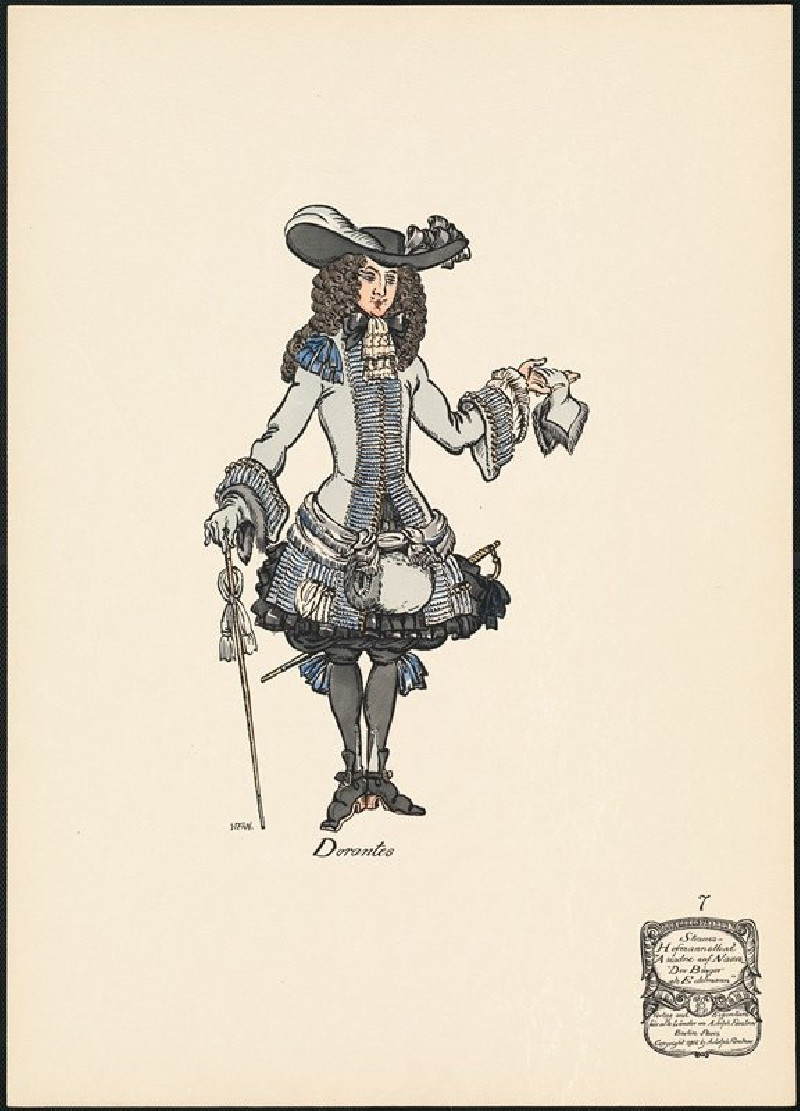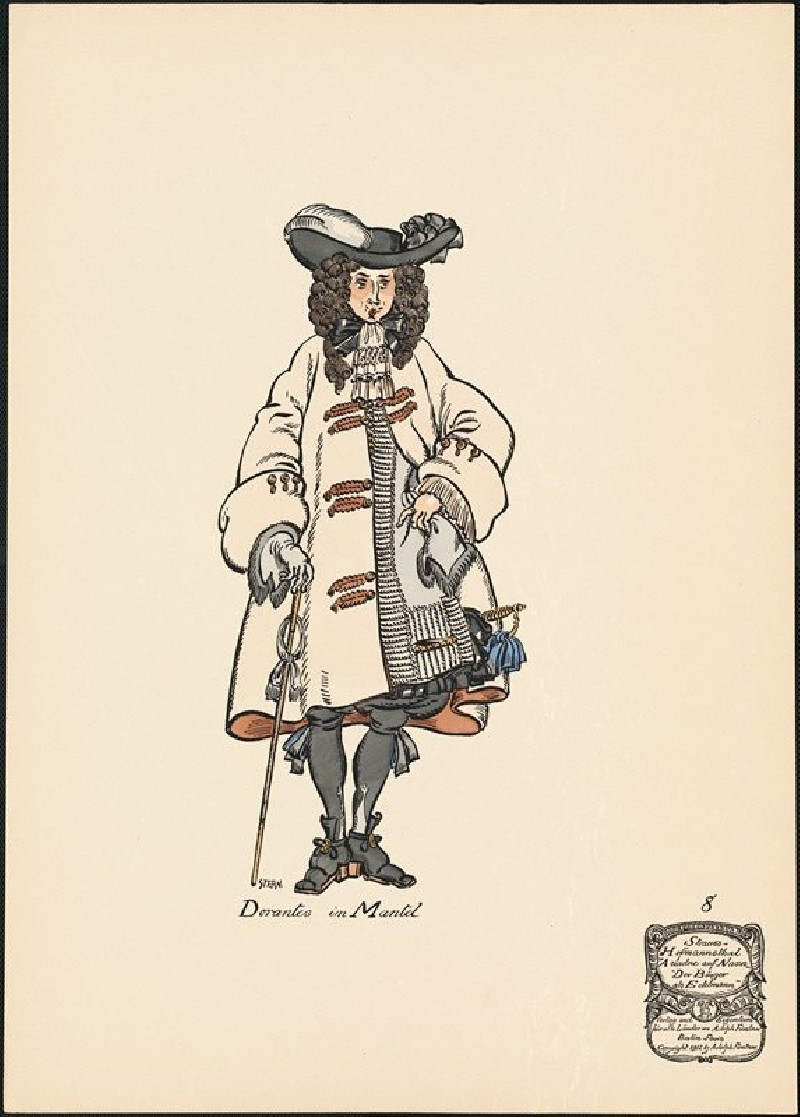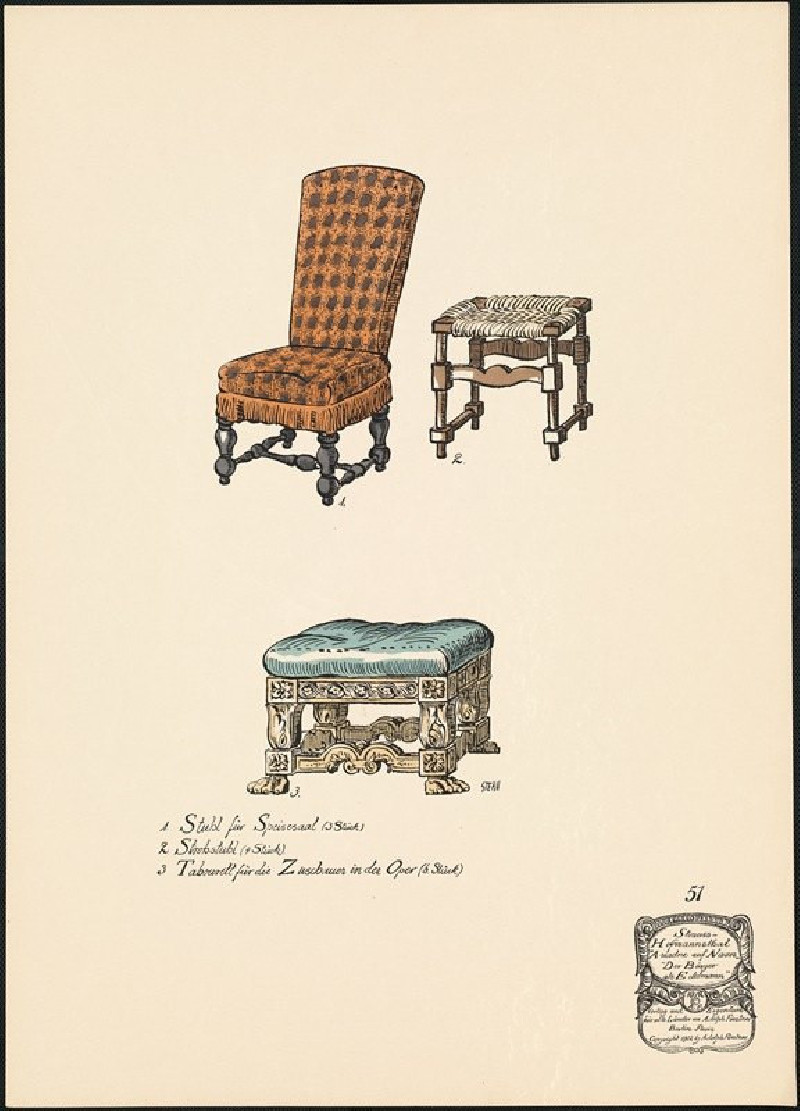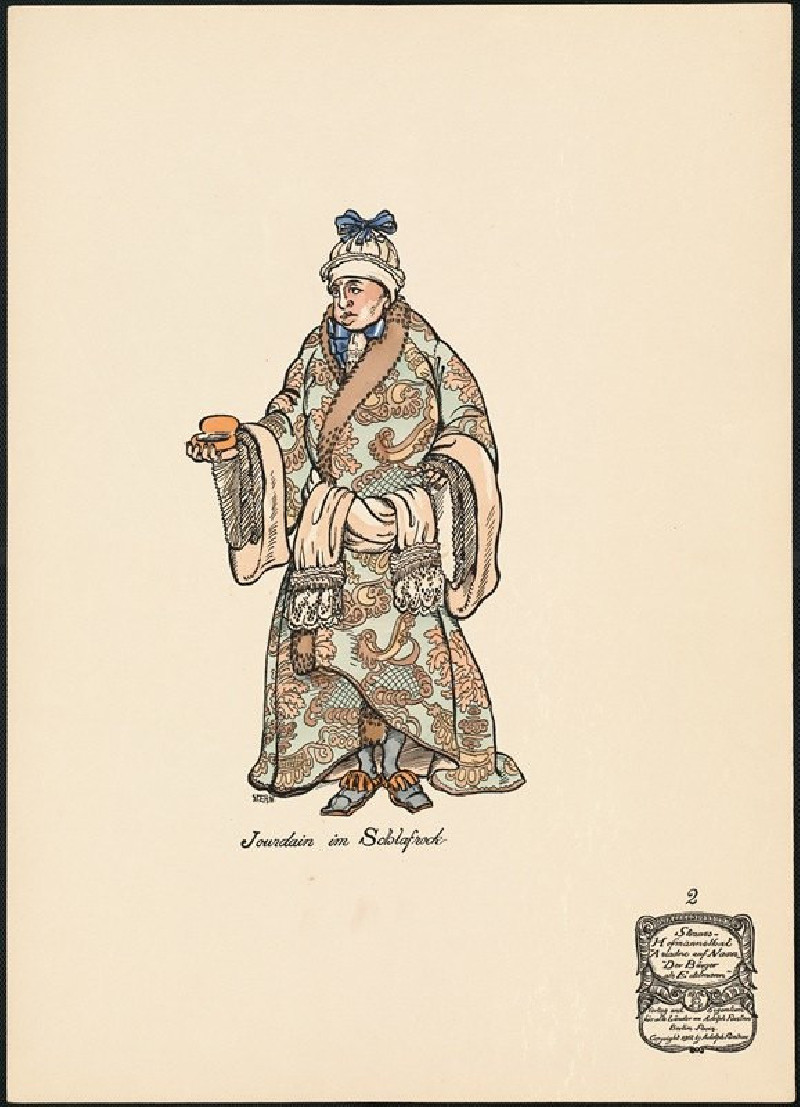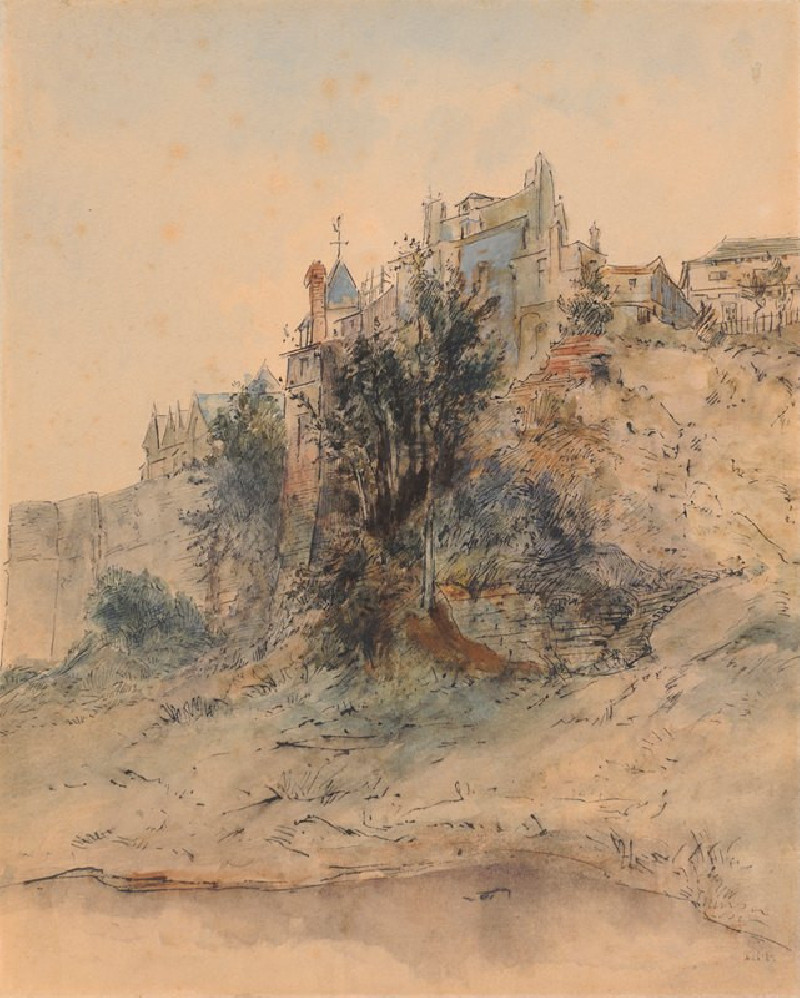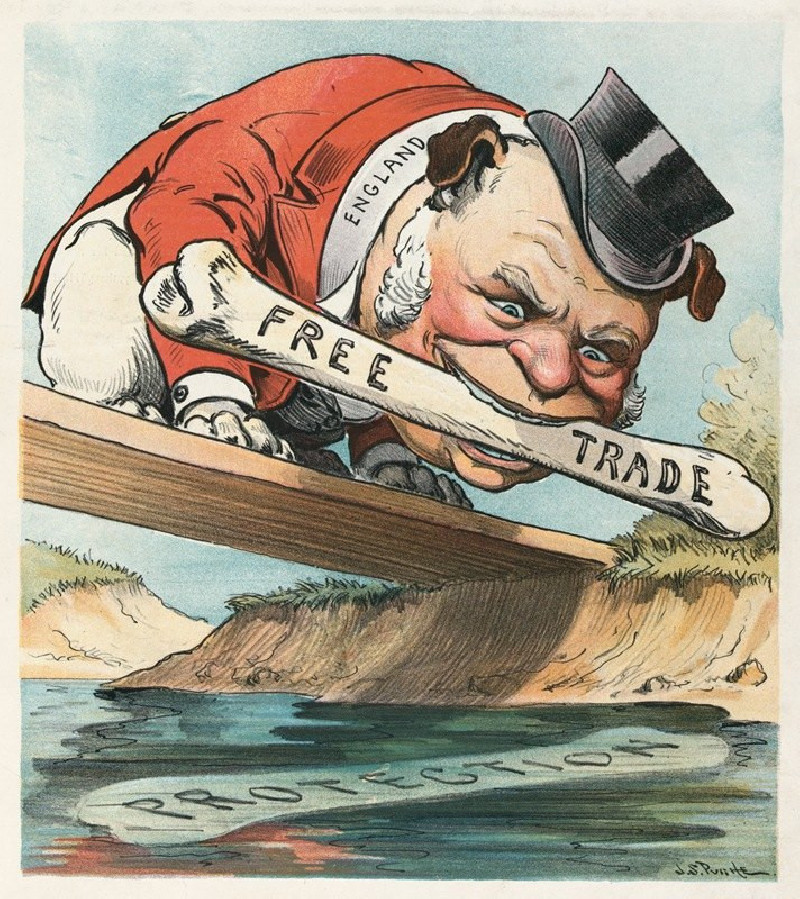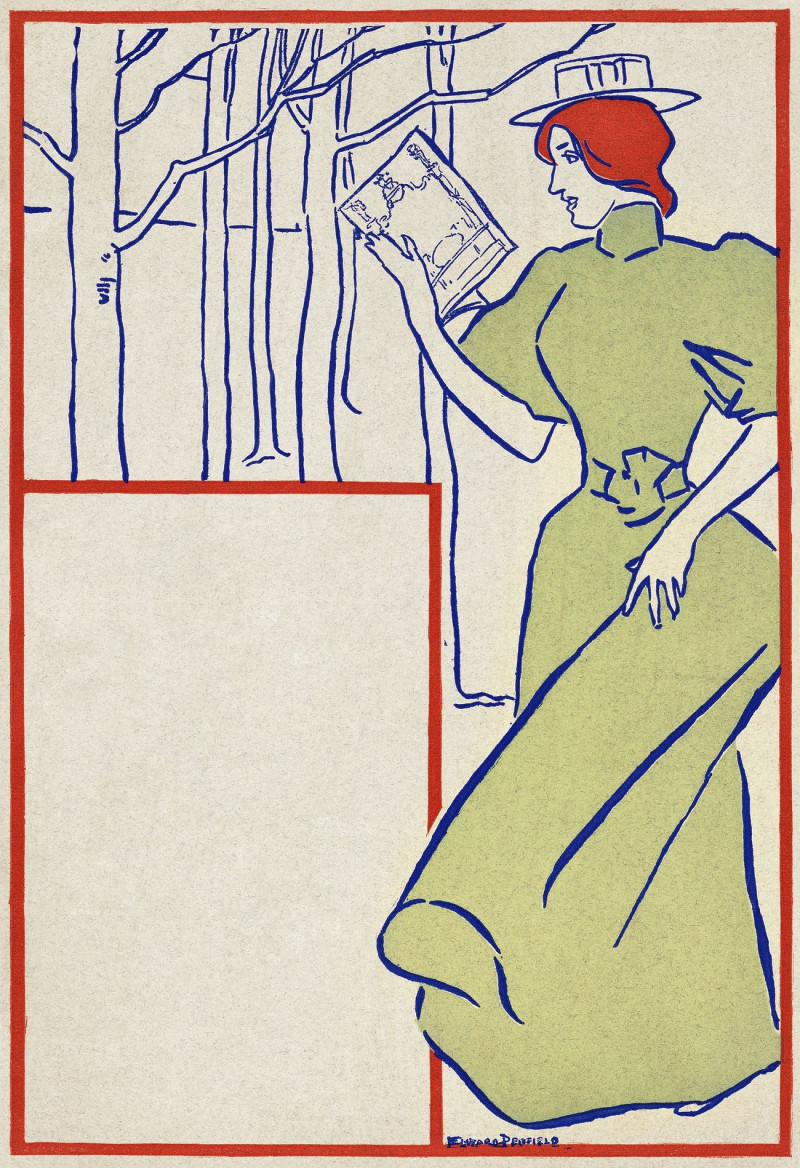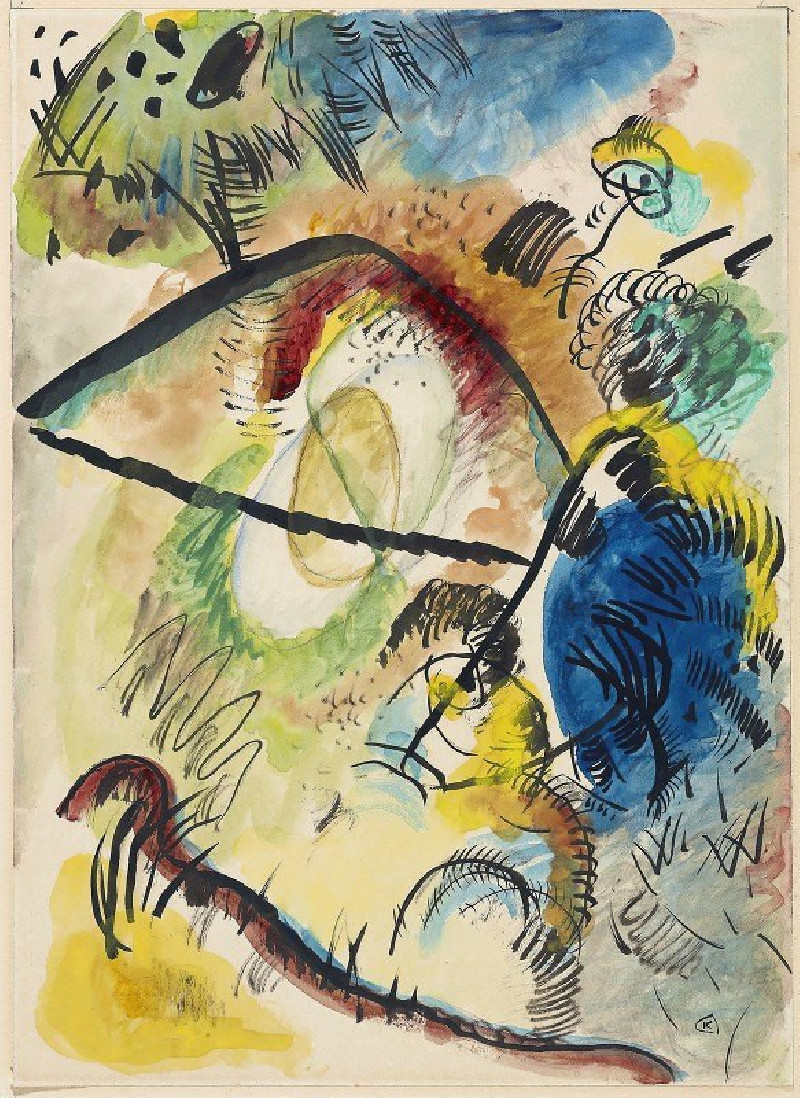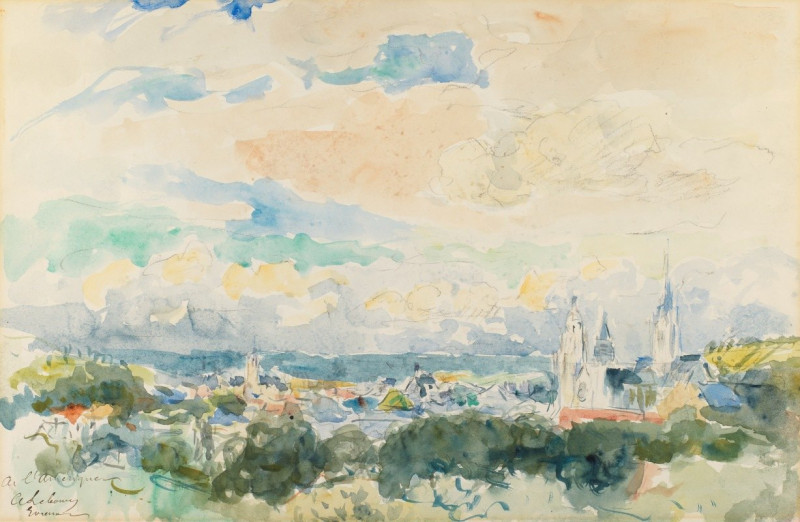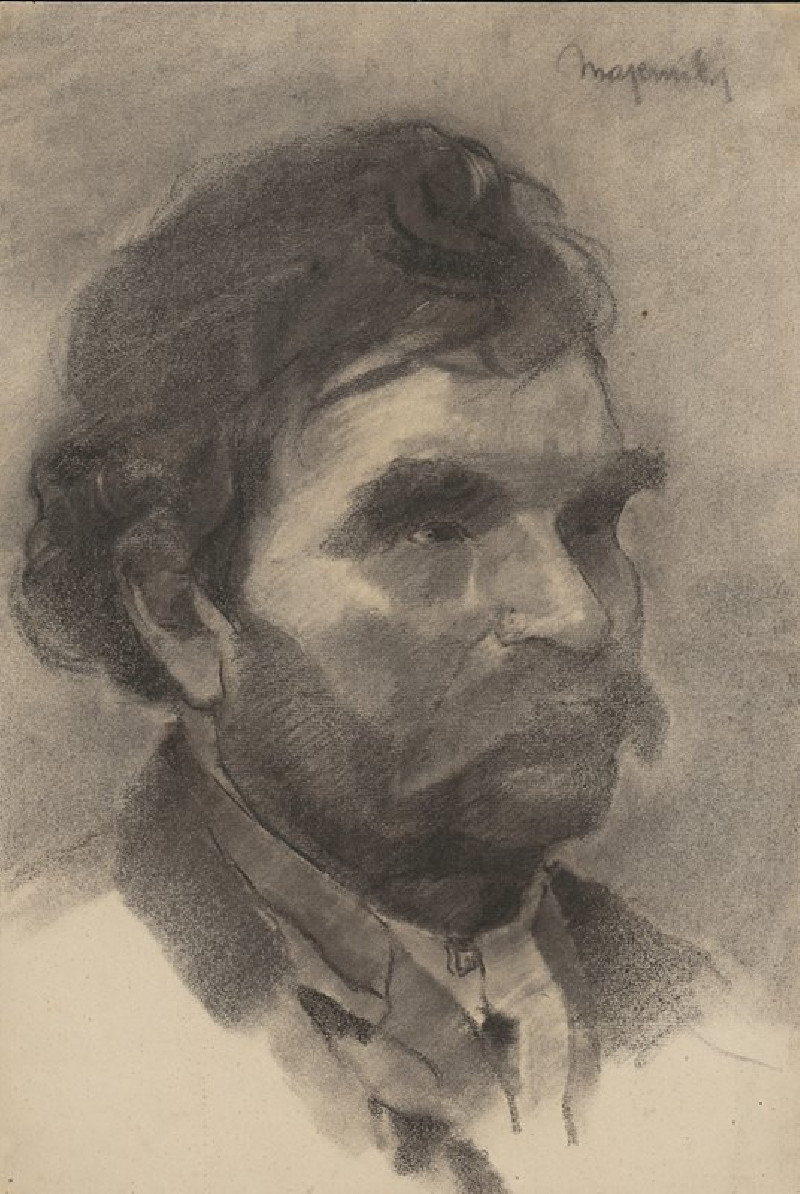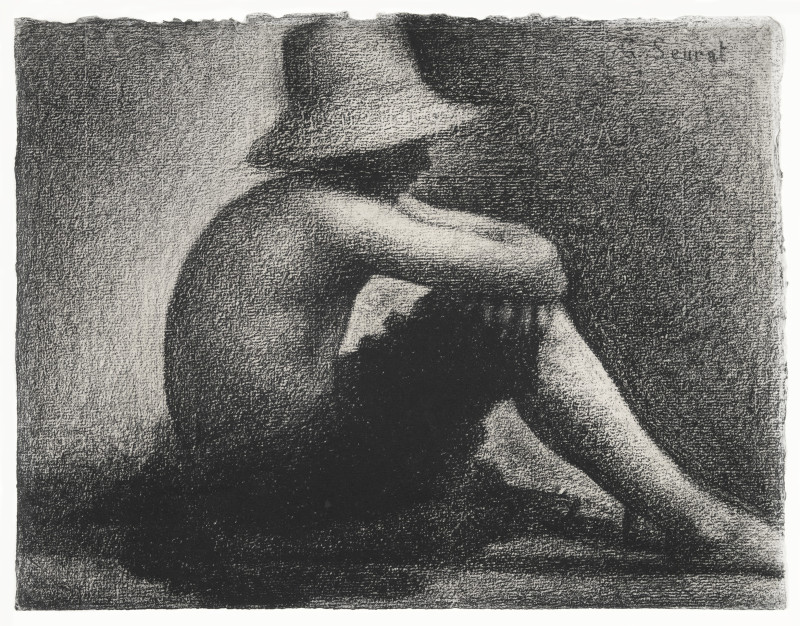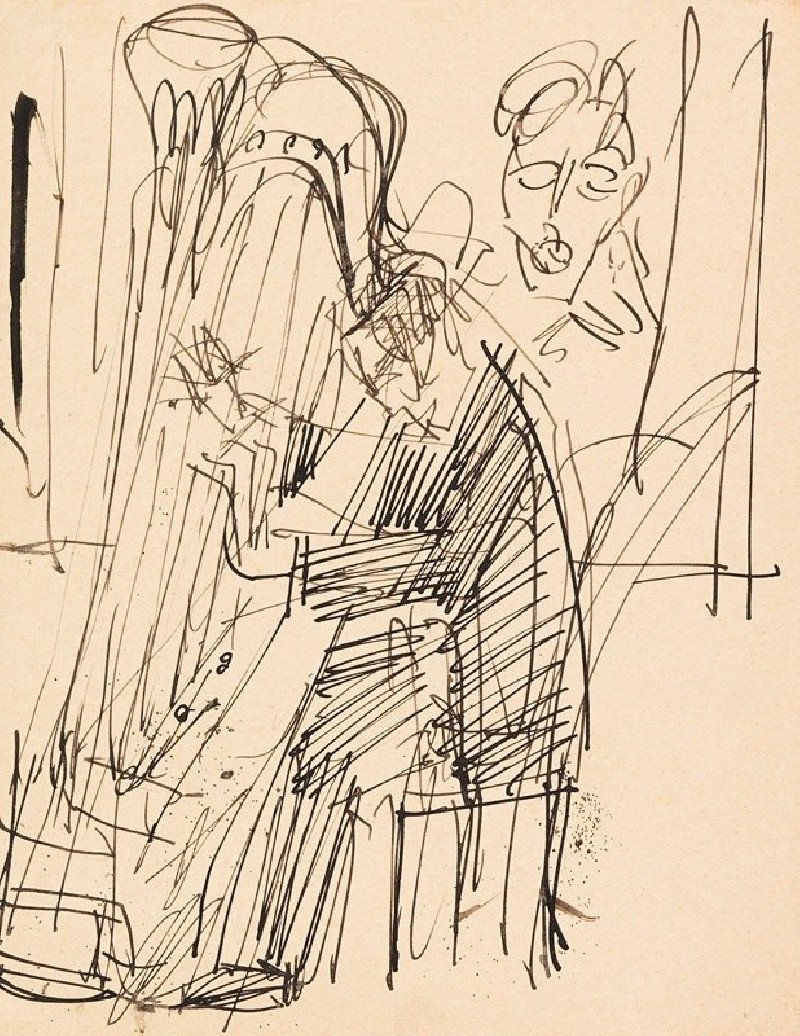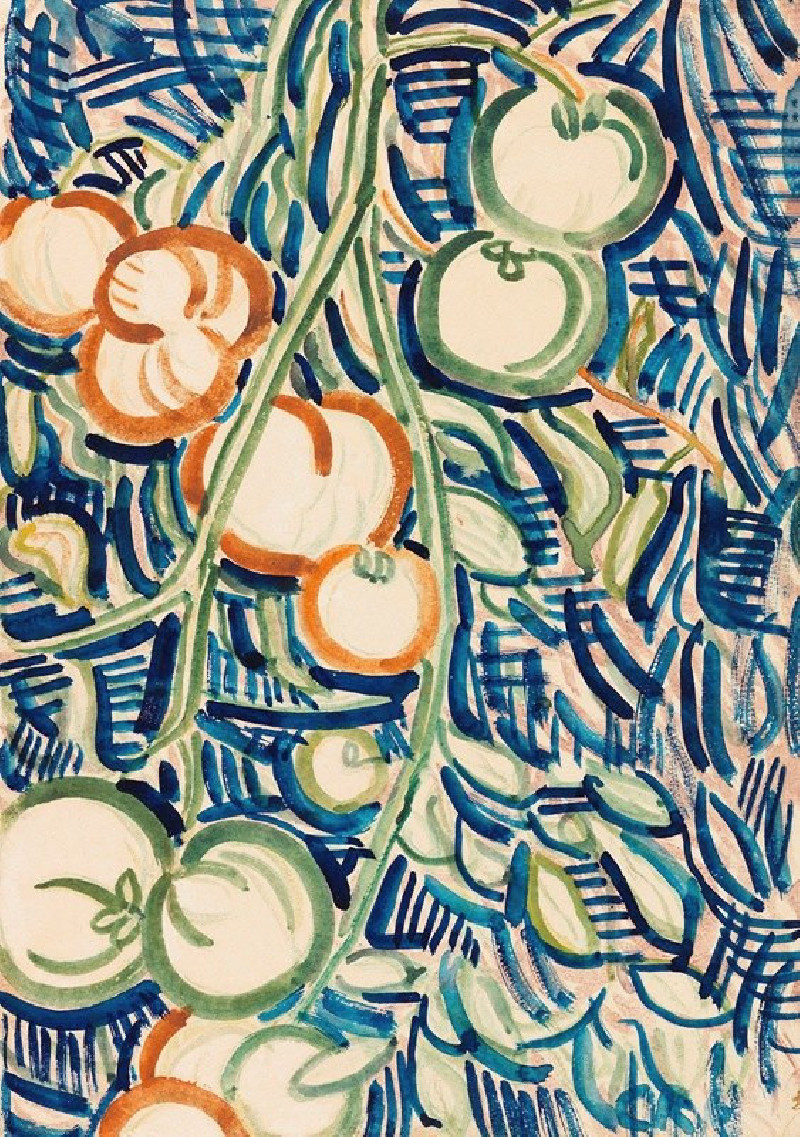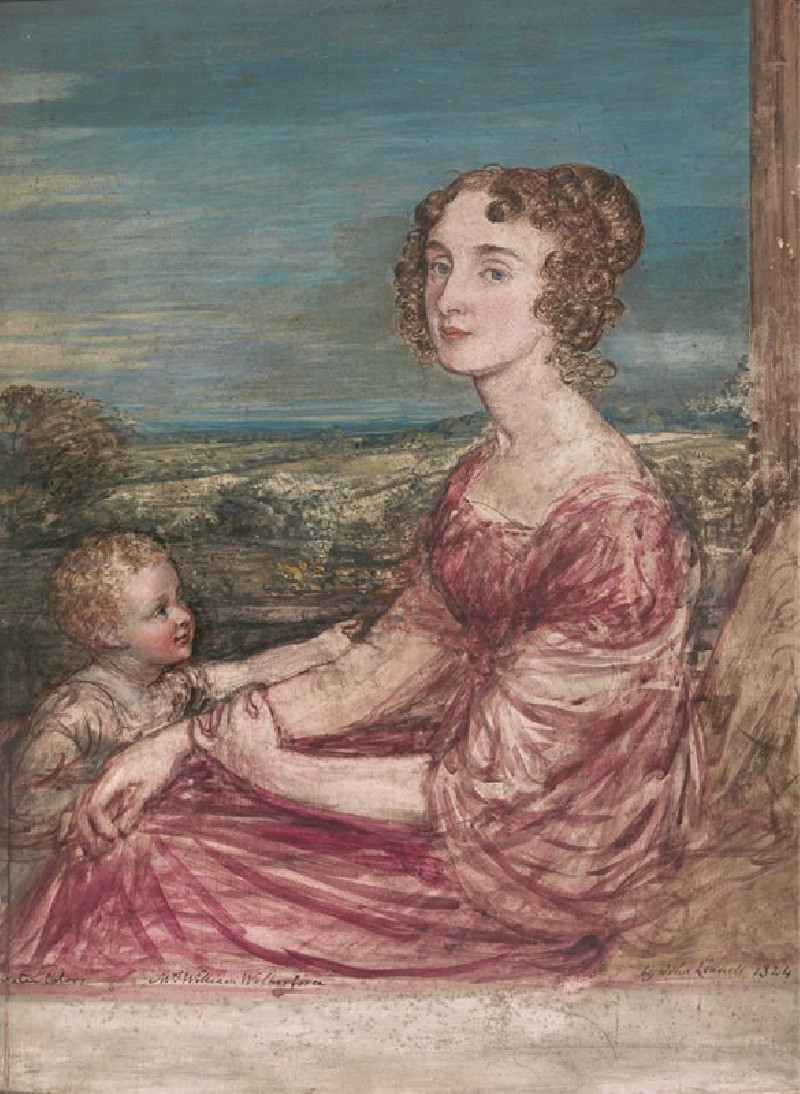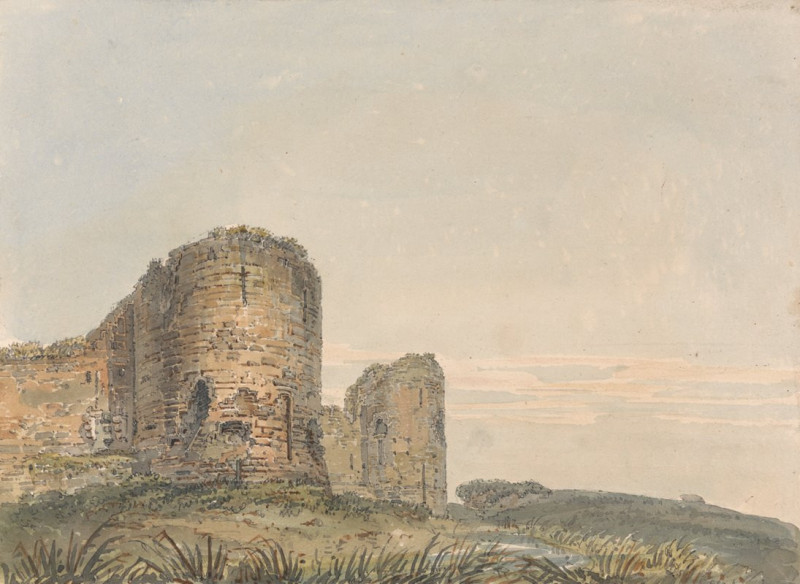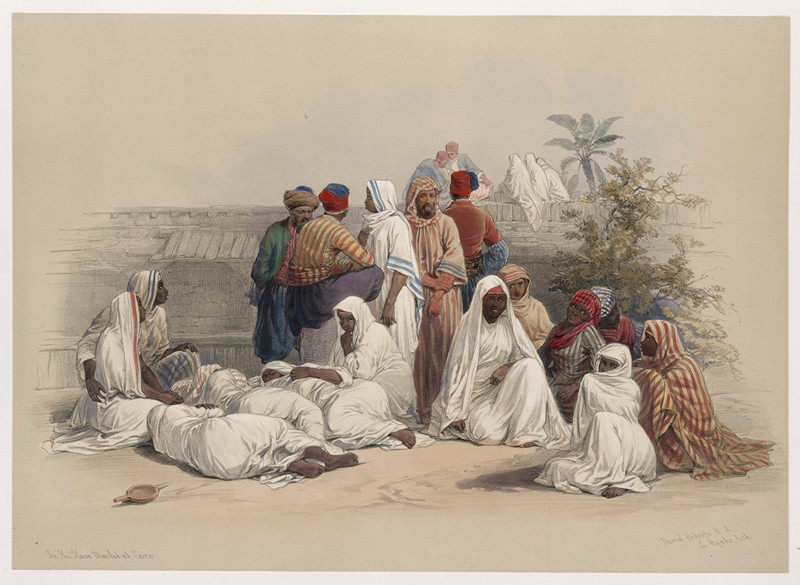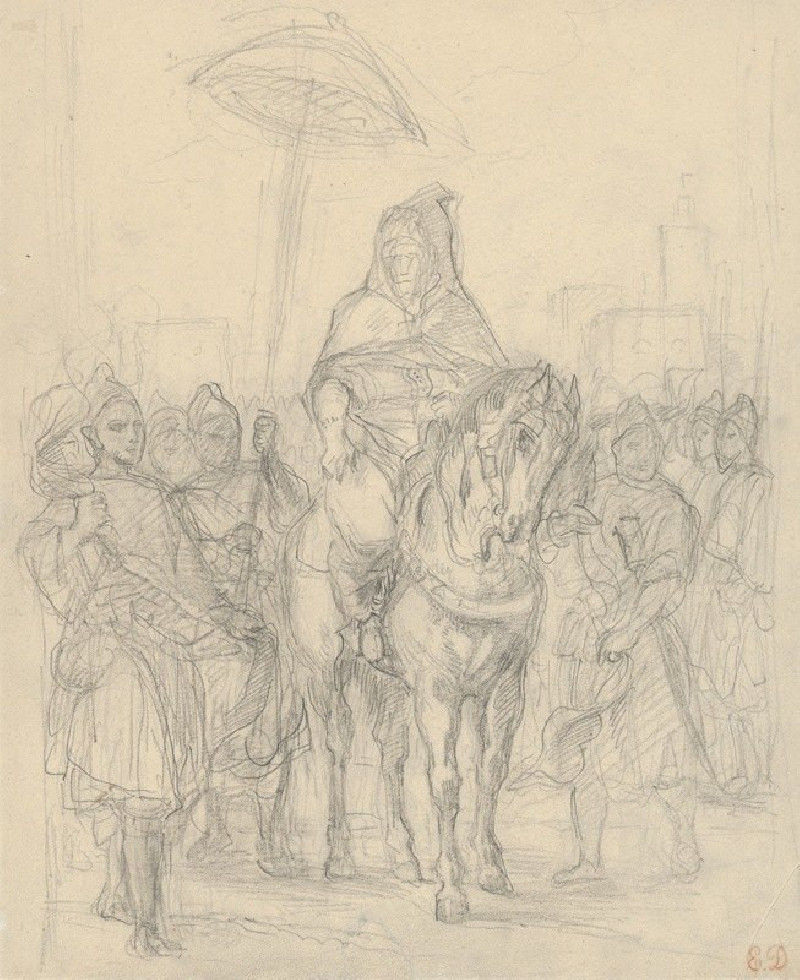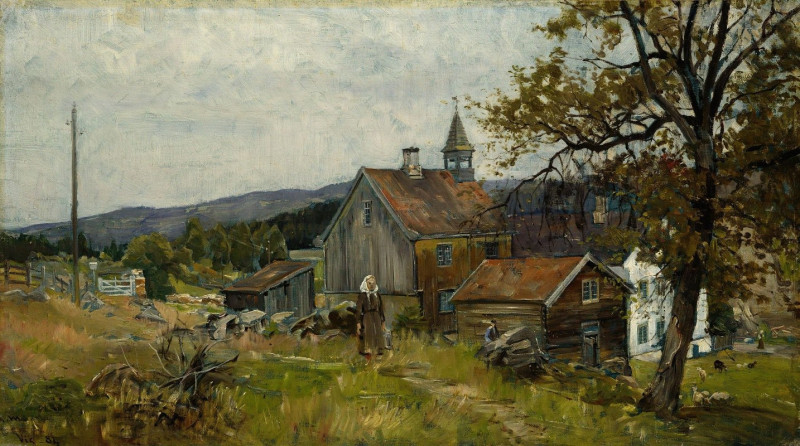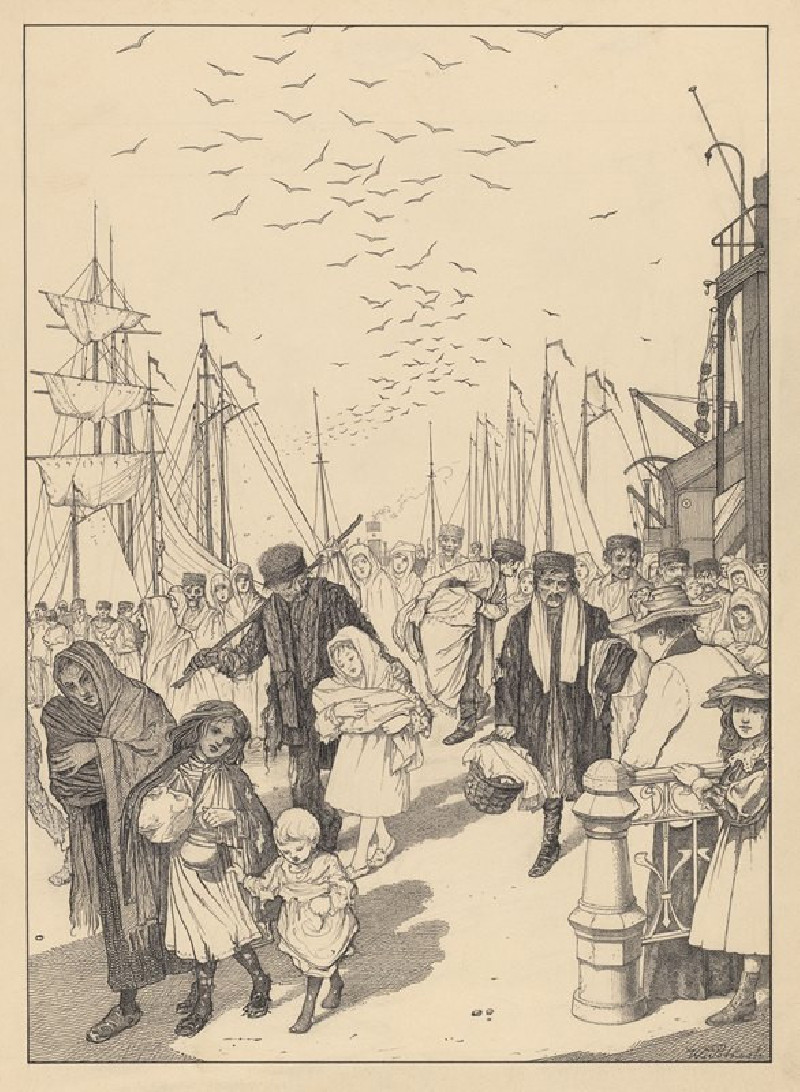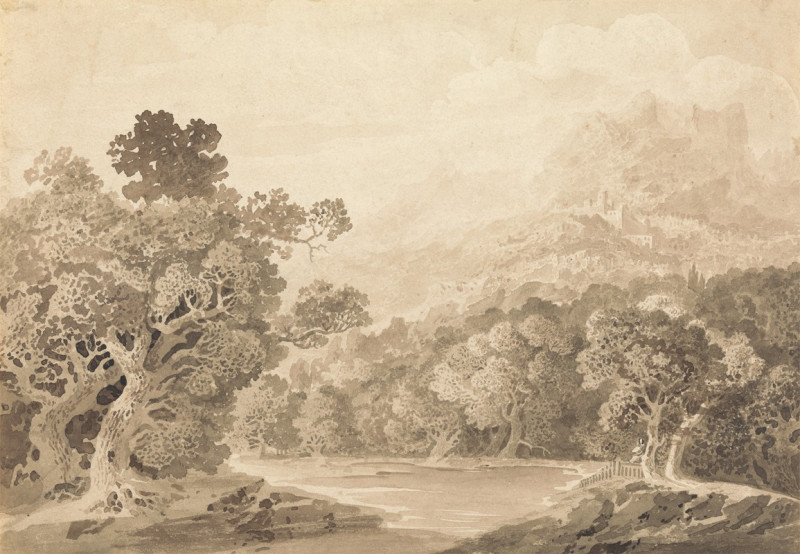Truffaldin (1912)
Technique: Giclée quality print
Recommended by our customers
More about this artwork
"Truffaldin" (1912) by Ernst Stern is a captivating artwork that masterfully combines illustration and costume design. This painting portrays the figure Truffaldin, a character commonly associated with Commedia dell'Arte, a form of theatrical comedy that originated in Italy in the 16th century. Truffaldin, often known as a crafty and cunning servant, is depicted in a dynamic pose, suggesting movement and a playful demeanor.Ernst Stern has dressed Truffaldin in a traditional costume that is both colorful and detailed, indicating the character’s vibrant and mischievous nature. The costume features alternating patterns of stripes and solids, adorned with belts and a large cape, enhancing the theatrical quality of the character. The character wields a baton, which could symbolize his role in directing the comedic chaos typical of Commedia dell'Arte performances.The use of bold lines and minimal yet effective coloring draws attention to the costume’s texture and the character's expressive posture.
Delivery
Reproductions are made to order and take 5 to 7 working days.
We send them out by courier and delivery takes another two working days.
If you need a reproduction sooner, please contact us - we can usually find a solution and produce it a little faster.
If you don't want to pay for postage, you can pick up your paintings at our galleries in Kaunas or Vilnius.
Returns
Yes, reproductions can be returned.
If you have any doubts more than 30 days after the date of purchase, please contact us - we will take the reproduction back for a refund or offer you a replacement!
We accept a maximum of two returns per customer - please note that we make reproductions to order, so please choose responsibly.
We do not refund shipping expenses.

